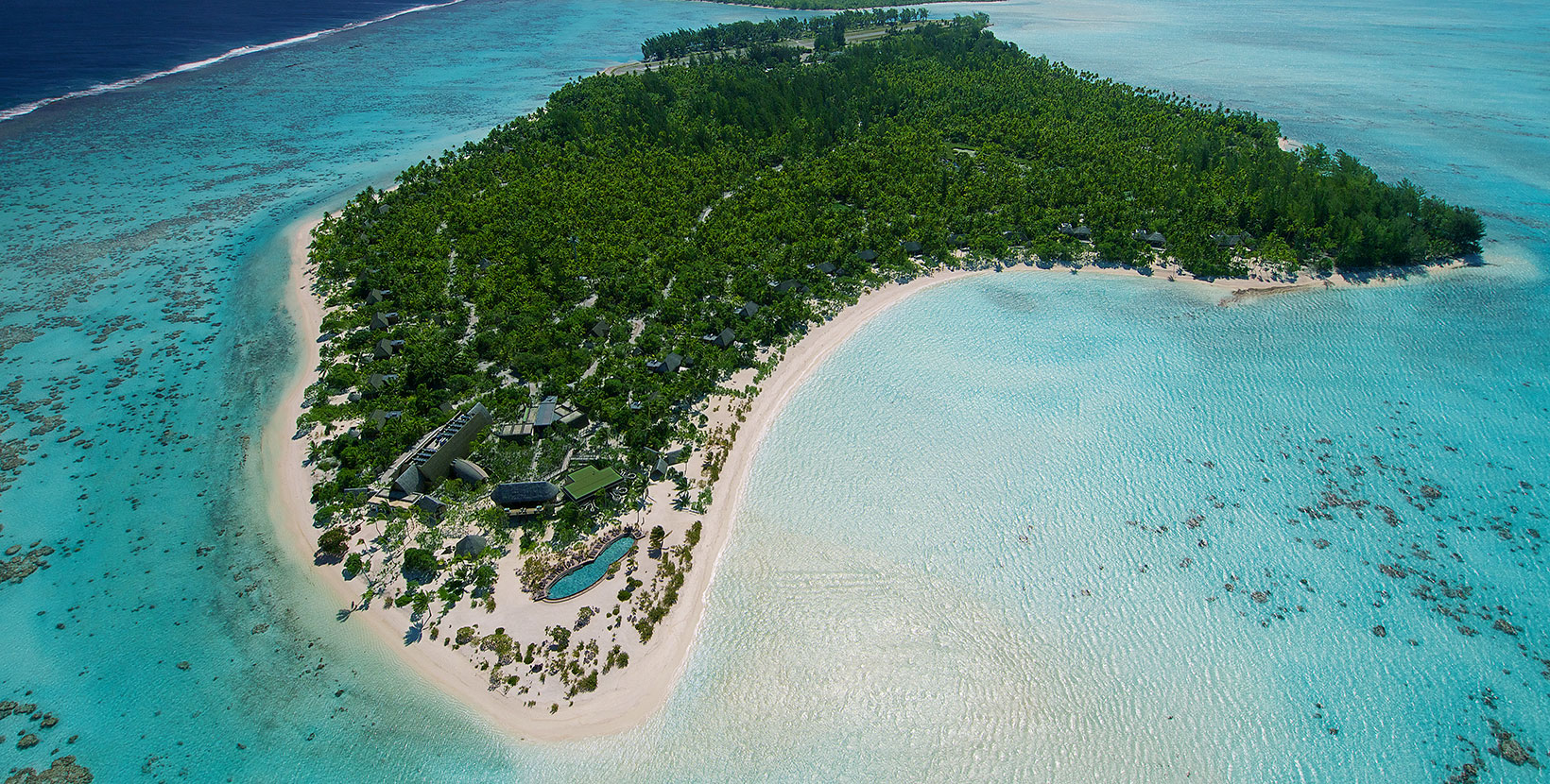
The green hotels leading the way in ocean regeneration

Can you travel responsibly? How can you become a conscious traveller? Here we think about the way we engage with the planet through travel. You will also meet some of the pioneers in sustainable travel and discover their journey.


Commercial aviation has transformed global economies, long-distance relationships and access to the breadth of the human experience. In the 1970s, the first commercial wide-bodied jet, the Boeing 747, took to the skies and boldly defined economical air travel. Wider planes resulted in more seats per aircraft, and therefore flight tickets were made cheaper. The ultra-low cost flight carrier Ryanair has made it possible to travel internationally for as little as the cost of a coffee and sandwich. It has never been easier or cheaper to fly — but what is the true cost to the planet?
Flights produce greenhouse gases — mainly carbon dioxide — from burning fuel, which contributes to global warming. Emissions per kilometre travelled are known to be significantly worse than any other form of transport. As such, aviation is one of the most polluting industries, creating potentially one of the most wicked problems to solve in the sustainability space – how can international travel be made more sustainable, when flying is often the only way to get from one country to another? The solutions are undoubtedly multi-faceted – some include heavier taxation on certain flights, improving international rail and sail infrastructure, as well as development of more sustainable jet fuels.
It is clear that we need to reduce our flying collectively, but there is a difference in emissions depending on how you fly. The average holiday-maker, when challenged with the moral dilemma of flying less, tends to believe that the focus ought to be on private jets commandeered by celebrities and Premier League football teams alike. The latter has recently been under some media scrutiny: In March 2023, BBC Sport found evidence of 81 individual short-haul domestic flights made by Premier League teams to and from 100 matches during a two-month sample period — some of these flights were as short as 27 minutes.
Domestic flights are so much more emitting than short haul or long haul because take-off requires much more energy input than the ‘cruise’ phase of a flight. According to The International Council on Clean Transportation (ICCT), the carbon intensity (how many grams of CO2 are released to produce a kilowatt hour (kWh) of electricity) is very high on very short flight distances of less than 1,000 km. The intensity falls with distance until around 1,500 to 2,000 km; which then levels out and changes very little with increasing distance. The ICCT also notes that often less fuel-efficient planes are used for the shortest flights.
Private jets are even less energy efficient, often transporting very few passengers, and generally produce significantly more emissions per passenger than commercial flights. Dr. Debbie Hopkins, an expert in decarbonising transport at the University of Oxford, explains: “A huge amount of fuel is used during takeoff and landing of a plane, no matter how many people you have on board. So an already polluting mode of transport (commercial aviation) becomes even worse (with private jets)”. If private jets, business class and first class are off the table, is there a way to make travelling in economy more sustainable?
In February 2023, The Royal Society, a UK science academy, published a report that warned of no single, clear, sustainable alternative to jet fuel able to support flying on a scale equivalent to present day use. According to the report: “Producing sustainable aviation fuel to supply the UK’s ‘net zero’ ambitions would require enormous quantities of UK agricultural land or renewable electricity to keep flying at today’s levels”. The report explores four alternative fuels which support the decarbonisation of the sector: hydrogen, ammonia, synthetic fuels (e-fuels) and biofuels.
These fuels were assessed against:
Having scoped the existing research base, the report had several conclusions, including:
The report concluded that all alternative fuel options had advantages and disadvantages; there is no clear contender which can be considered most environmentally friendly.
Whilst there are lots of questions left to answer, we can be certain of a few things. A combination of alternative fuels will be needed to decarbonise flying, but flying at its current rate cannot be sustained by alternative fuels. The research is clear that long haul flights are less emitting than short haul flights and travelling in economy is far less emitting than business, first class and private jets. Undoubtedly, research into the best alternatives and investment to make them viable options is urgently needed. Until then, we recommend keeping your private jet in storage, flying economy when needed, considering local holidays and finding alternative transport methods.
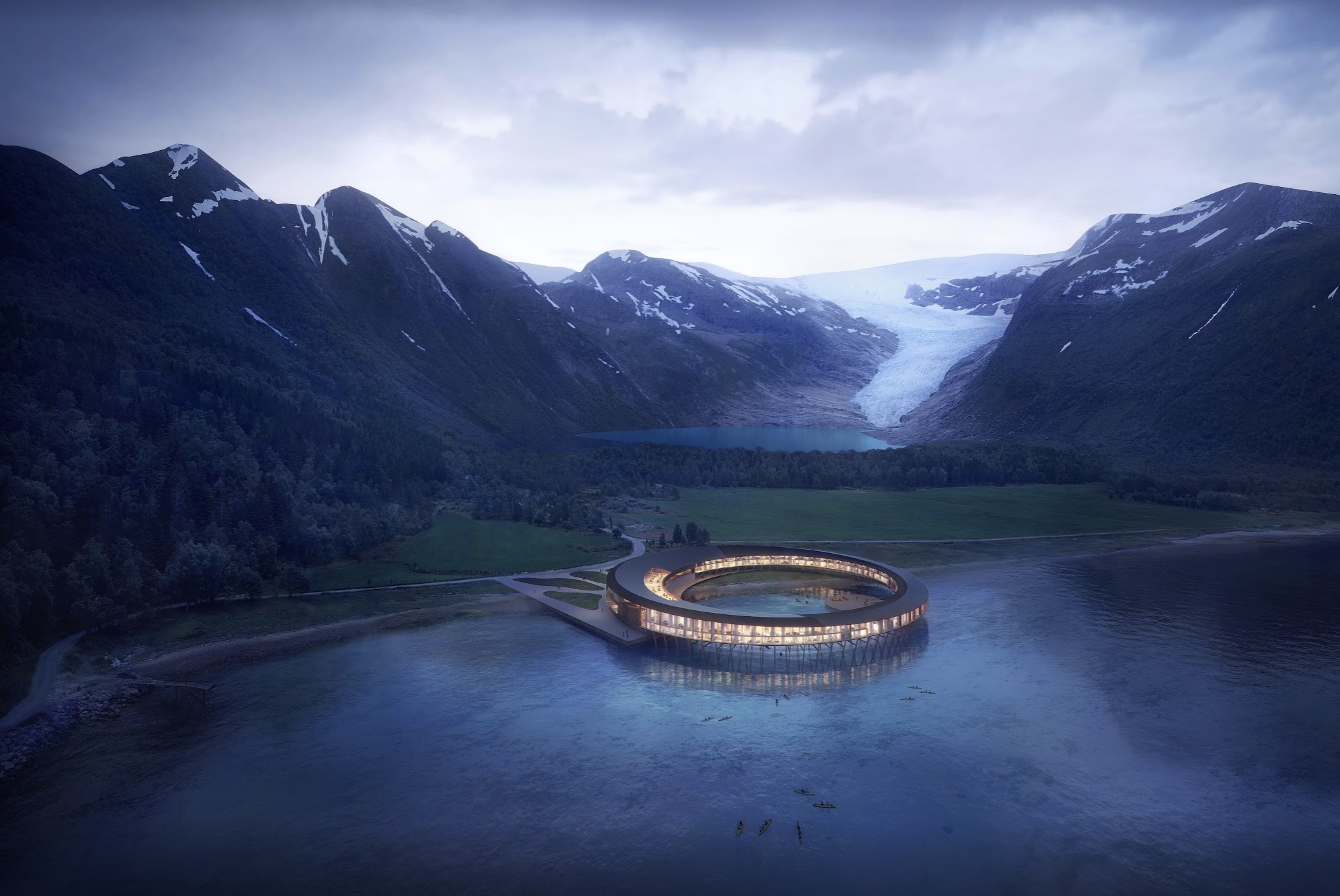
If the idea of utter seclusion and being totally cocooned by nature and the elements sounds like an appealing holiday to you, you may want to bookmark early 2024 in your calendar.
Once it’s fully operating, the innovative hotel will consume approximately 85% less energy than traditional hotels and harvesting solar power, it will produce more energy than it uses – thus making it energy-positive.
Pioneering in both its low-impact design and sustainability goals, the hotel aims to be fully off-grid, carbon-neutral and zero waste within the first five years of operation. To add to its eco-credentials, the project is being funded by Green Bond, a sustainable investment fund. Svart’s design, courtesy of Norwegian architect firm Snøhetta is inspired by the Norwegian Fiskehjell (a wooden structure used to dry fish) and Rorbue (a fisherman’s traditional seasonal home). Energy-intensive building materials such as structural steel and concrete were avoided as much as possible throughout the construction.
Architects carried out extensive studies into how solar radiation behaves in the area throughout the year, in order to optimise energy output. They then used the findings to design the hotel rooms, restaurants and terraces strategically within a circular design in order to utilise the sun’s energy consistently despite the changing time of day or seasons. The glass-fronted, circular design also allows for 360-degree views of the glacier, the crystal clear waters which surround it, and the breathtaking Northern Lights. The roof is clad with solar panels which will further reduce the overall carbon footprint.

Six Senses Svart will house 94 rooms, four restaurants, a 1,000 square metre spa, a sustainable farm, a design laboratory and an education centre which will educate guests on topics such as waste management, glacier protection and sustainable farming. There will also be two electric boats to be used by the hotel and its visitors.
The food served across each of Svart’s four restaurants will make use of local, home-grown and foraged produce as much as possible, while the spa will offer holistic treatments using indigenous Nordic elements and 100% sustainable and locally-sourced products. From kayaking straight from the waters just below the bedrooms to ice climbing on the glacier and practising yoga in the midnight sun, the beautiful location of the hotel will allow for many arctic experiences. The surrounding area is home to some of the rarest flora and fauna species in the world too, so there is plenty to explore with foraging, wildlife-spotting, diving and fishing.
In the meantime, while we patiently wait for Svart to open its doors, here are 3 alternative eco-friendly hotels in Europe well worth a visit:
Forsthofalm is an Austrian eco-retreat set within the beautiful Alps. The family-run hotel is built entirely from wood, stone and natural materials, without the use of chemicals and houses a wonderful spa which incorporates homemade products using local ingredients.
The Scarlet is a coastal escape in Cornwall’s Mawgan Porth with an Ayurvedic spa, an outdoor pool that’s naturally filtered by reeds and clifftop hot tubs. The food also champions seasonality and locality.
The Lefay Resort in the mountains of Gargnano, Italy overlooks the stunning Lake Garda. It is built from biocompatible materials and decorated with natural fabrics. Electricity used to power the hotel comes from a renewable source, recycled rainwater is used within the spa and local farms supply the restaurant’s delicious and seasonal menu.

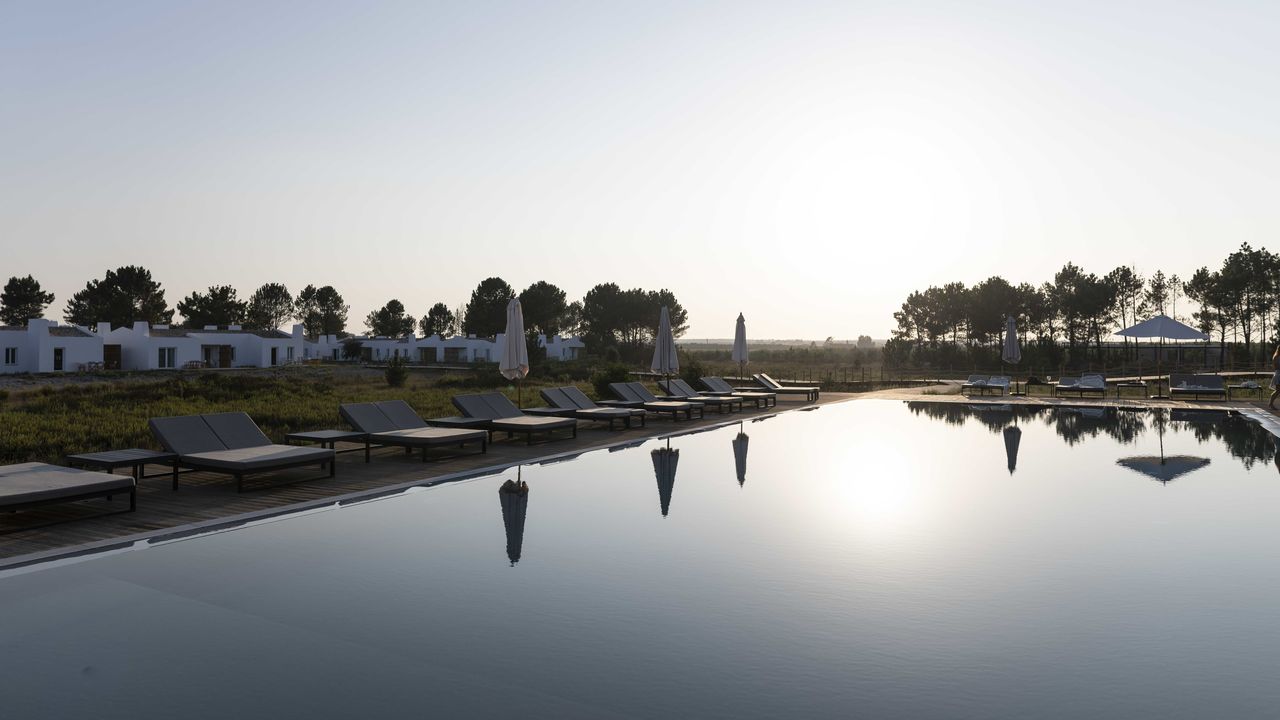
Overtourism is a real issue, one that affects the planet and people in myriad ways, so staying off the beaten track while supporting an independently owned, sustainably run hotel like Craveiral Farmhouse feels right. It is located in the region of Alentejo, which covers over 30% of Portugal but is home to just 5% of the population. It’s the hottest and driest part of the country and is sparsely populated, rich in history and diverse in landscape.

Spread across 9 acres of land and nestled amidst the rocky terrain of Alentejo, Craveiral is the passion project of Pedro Franca Pinto, a Lisbon lawyer who always had dreams of becoming a farmer. Pinto bought the land – a neglected field of carnations in the hills of Odemira – over 10 years ago, and slowly set about restoring it into the resort that stands today.
Beautifully imperfect in its ruggedness, Craveiral was built with respect and consideration for the surrounding environment, which is awash with pine forests, orchards, olive groves and cork fields. It’s all about simplicity, space and slow living here. A collection of 38 cottages of varying sizes are peppered across the resort, many framed by wooden terraces. The relaxed interiors are a nod to Portuguese design, with hand-crafted wooden furniture from local brands and a pared-back, simplistic feel.
For those craving a reconnection with nature and taste of rural life, Craveiral provides a relaxing and unfussy setting. There are plenty of opportunities for families to be entertained and educated through authentic experiences on-site. Spend time on the farm amongst goats, donkeys and other animals, take in the surrounding area on horseback, meander through an orchard of indigenous trees, learn about the local flora, fauna and produce at the permaculture garden and nature centre, and enjoy al fresco picnics and BBQs amidst unspoilt countryside with soothing views. Set between the countryside and the sea, you get the best of both worlds here. Nearby, there are quaint fishing towns, nature parks and plenty of coastline to explore. The turquoise beaches of Zambujeira do Mar and Carvalhal are also just 15 minutes away and are far less crowded than more popular destinations such as nearby Lagos.
The hotel adopts various eco initiatives. Rainwater is collected, filtered and reused and the resort’s restaurants adopt a seasonal, organic-first, low-waste approach. The farm-to-table concept at both Craveiral FarmTable and Craveiral Pizzeria highlights local ingredients, much of which come from Craveiral’s very own farm and gardens.

Owner Pedro’s driving goals run deeper than providing a unique and inspiring experience for guests; he is driven by a dedication to leaving a positive impact on the world. “I started Craveiral Farmhouse when I knew that I was going to be a father back in 2010,” he says. “Since the beginning, conceptually wise, the aim of the project was to contribute to a better world, one that my children would be proud of.” With this in mind, every decision that is taken regarding
Craveiral is carefully considered with a holistic view on sustainability in an environmental, social and financial sense. “We are aware that we cannot change the world, but we can take small steps that will contribute to the change we want to see in the world and lead by example, contributing to changing the mentalities in our community.”
The local community of Alentejo is diverse and agriculture plays a central role in life here. Pedro sees great value in the community as well as an obligation to support and empower them. “In terms of tourism, we are one the biggest employers of our parish, with 50 workers. We never closed during the pandemic, we kept all jobs and we didn’t apply to lay-off procedures.” At a time when hospitality suffered greatly, Pedro was creative and resourceful in keeping his staff employed, business running and the many local artists and creatives supported. “During the first lockdown, we kept our Craveiral Pizzeria ComVida project open, delivering pizzas to the local community.” The project employs intellectually disabled people that have the capacity to work but have found it difficult to maintain jobs due to discrimination and bias. “In addition, 1€ from each pizza goes to fund the association Vila Com Vida, which promotes the integration of these people into the labour market.” Last month, Pedro invited a Portugeuse band to the farmhouse to record their album and in the evenings, they returned the favour by performing for guests.

Staying at Craveiral, the focus on physical and mental health and wellbeing is ever-present. The resort provides four swimming pools, a wellness centre, spa treatments, and plenty of opportunity for physical activities. Integrating these values into their philanthropic efforts, they also financially support local sports clubs which serve those residing in the region. “This is not just about business, this is about life,” concludes Pedro.
Going somewhere where you can experience a bit of luxury and relaxation is one thing, but also having the chance to ground yourself and reconnect with nature, without the superficial clutters of everyday life feels far more meaningful. The afterglow of this kind of trip is more likely to last once you’ve returned home than your typical beach holiday.
Craveiral Farmhouse is located 15 minutes from the beaches of Zambujeira do Mar and Carvalhal, in the Southwest Alentejo. The nearest airport is Faro. Prices: High season: from €180 to €600 Low season: from €160 to €250
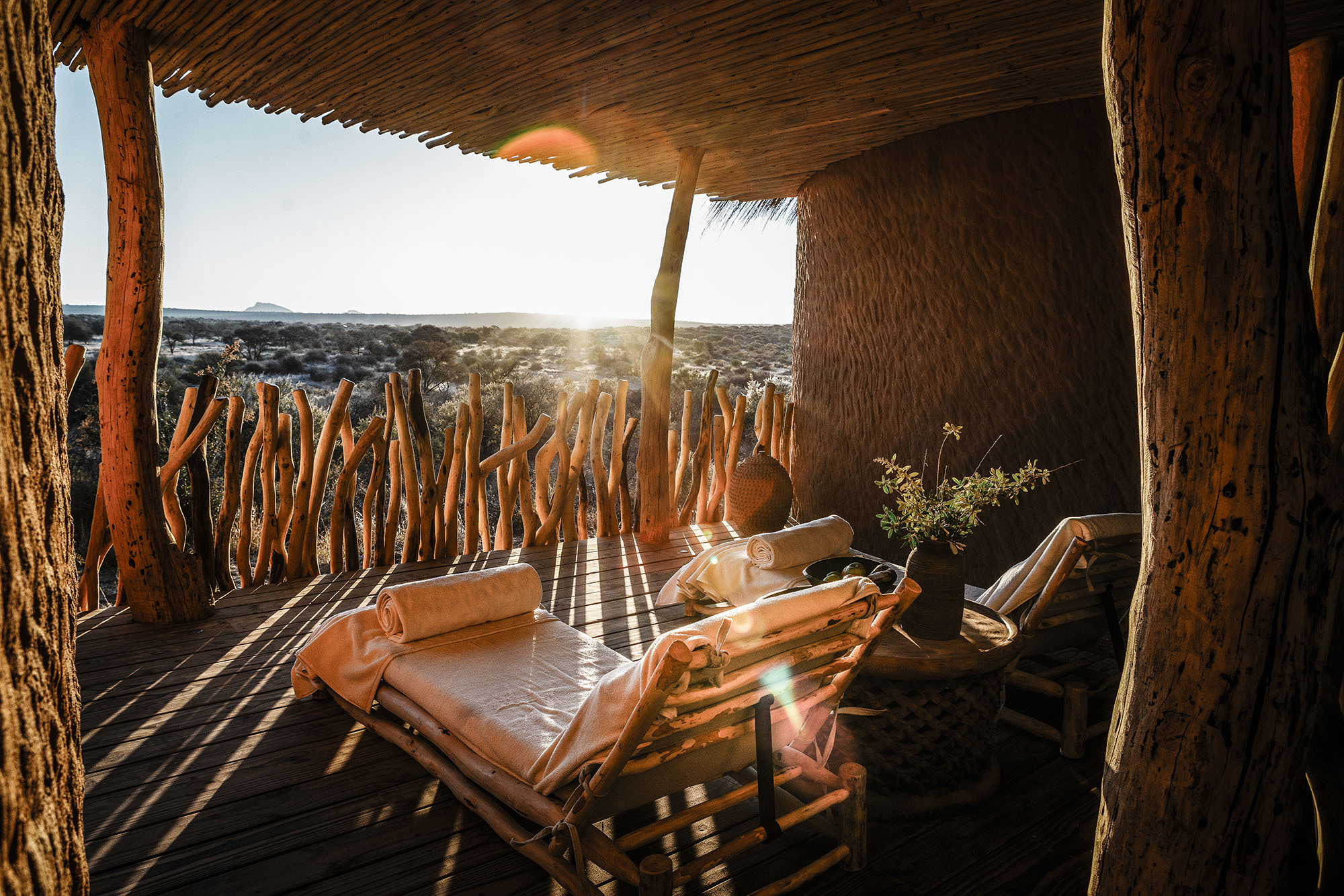
Conservation and sustainability have been at the heart of Zannier Hotels’ DNA since the hotel group’s inception in 2011. Founder Arnaud Zannier has always had the core belief that the surrounding environment, culture and people of a location should always remain protected when developing a hotel or resort.
Over the last decade, Zannier has grown to include five hotels, two residences and two private estates across four continents. Arnaud’s ethos has remained integral to the overarching themes and day-to-day running of the business. As the brand continues to expand its global offering with the recently opened Bai San Ho resort in Vietnam and an imminent launch in Mexico next year, we caught up with the man spearheading everything to discuss his driving goals, industry insights and hopes for the future of sustainable luxury travel.

I have always had a passion for architecture, interior design, good food and restaurants, so hospitality has always been close to my heart. After working in London for five years with the footwear brand, Kickers and running my own business (N.D.C made by hand, luxury handmade shoes), my father asked me to come back to the family business in fashion, however, I felt I couldn’t really make my mark. I already had in mind some ideas for a new approach to hospitality. I identified a trend – which was niche at the time – which was the view that the future of luxury is more about moments and experiences as opposed to gold taps and marble. In 2011, I had an opportunity to purchase the three-star Michelin restaurant “La Ferme de mon Père” in Megève (France) which I transformed into our first property, Zannier Hotels Le Chalet. This is where my Zannier Hotels adventure started.
Our core belief is that the surrounding environment, culture and people should remain protected, with conservation and sustainability playing a major part in Zannier Hotels’ DNA. At each of the Zannier properties, we constantly strive for sustainability in daily operations and work with passionate local teams with the utmost respect for local heritage and surrounding environment.
We strive to conserve energy, limit single plastic use, and reduce waste across our properties. At Zannier Hotels Sonop, 100% of the energy comes from solar panels installed onsite and Zanier Hotels Omaanda has its own beehive to provide guests with honey. At our properties in Vietnam and Cambodia, we grow and cultivate our own rice in partnership with local farmers, and we have our own on-site gardens to supply produce to the kitchens.
We also aim to support the local communities, with the majority of team members at each of the properties employed locally. We organise English lessons for residents of the surrounding villages in Vietnam and Cambodia, plus we are working on launching a more permanent training scheme for young people living in areas surrounding Zannier Hotels Bãi San Hô so we can attract local talent and give back to community In addition, we source all our materials, food and products locally to support farmers, fishermen, artisans and craftsmen.
Our approach to sustainability is evident in the construction of the hotels. To minimise the land impact of our new properties, we carefully consider the number of units developed, even if this means a lower occupation/revenue. We strive to achieve a good balance between maintaining a location’s natural charm and designing new infrastructure and we use local materials and building techniques to ensure our properties blend seamlessly into the landscape. This is reflected in the values of minimalism and authenticity that characterises Zannier Hotels.
Our commitment to wildlife conservation is most apparent at Zannier Reserve by N/a’an ku sê in Namibia which was created to ensure the land and wildlife remain protected. The 7,500-hectare reserve, which is financed predominantly through a percentage of revenue made from guests staying at Zannier Hotels Omaanda, celebrated two years at the beginning of the pandemic, during which time it has positively impacted the lives of 39 animals; 19 of which were critically endangered, 18 were near-threatened and two were vulnerable.

Importantly, at Zannier Hotels we are constantly evolving and improving our sustainability practices. There is always more we can do, and we strive to do more each day. Sustainability is a necessity, not a choice. To us, sustainability and luxury are synonymous. Sustainability does not equal lack of or limitations, nor does our vision of luxury equal opulence or extravagance. Our ethos is less about “things” and more about “experiences”. We prioritise careful craftsmanship, inspiring people, fascinating cultures, and untamed landscapes. These are our luxuries. We aim to offer authentic and delightful experiences to our guests within beautiful environments, alongside a genuine and flawless approach to service and lasting sustainable actions.
To think differently in an industry that is very systemized is a challenge, but this is our vision and what we strive to do. In terms of sustainability the big challenge is to design the greenest hotel possible without compromising our experience, and continuing to challenge ourselves every day. We cannot settle for what we already have, we must constantly progress.
I think the best way to help our guests to embrace sustainability is to show them what we do during their stay and highlight the impact those actions have on the environment. For example, last year the Zannier Reserve by N/a’an ku sê launched their unique Rhino Rangers volunteer programme, which was created to offer travellers the opportunity to immerse themselves into the challenging world of anti-poaching in Namibia. The programme gives guests a unique insight into the threat of poaching and educates them on the importance of conservation.

Society has woken up to the environmental issues we face, and the pressure and realisation from this is part of the answer. We have also started to wake up to the effects of mass-tourism and the damage it has done to our planet. People still want to travel but they really want to take their time when they’re there and ensure it has a positive impact on the local communities and environment. I think this has accelerated during the pandemic. The time out has made us take stock of the world around us and the damage we’re doing to our planet. People are more mindful. How a resort impacts its surrounding environment, and nearby communities will be a key factor in choosing a destination. They want to travel with a sense of purpose and are increasingly conscious about how their tourism dollars can positively or negatively affect the place they’re visiting.
This will only become more important as we see the impact of climate change on our planet – such as the recent devastating floods and fires. The IPCC Report is a stark warning, and we need urgent collective action to save the planet. I believe this is now at the forefront of the minds of most travellers and sustainability will become a necessity, rather than a choice.
The importance of sustainable tourism has been on the industry’s radar for a number of years, and the pandemic certainly highlighted this further. The effects of climate change and over-tourism confirms the vision that I had a decade ago, to create a brand focusing on a ‘human-scale’ level of tourism. Today more than ever, the hospitality industry has a duty to the environment which has been under threat for decades due to over tourism. Having seen firsthand how communities and cultures have been affected, it is obvious that we need to act together quickly to protect future generations.
Working with local communities is not just important for Zannier Hotels, it is a core element of our DNA. We operate a diverse and inclusive company culture; 98% of our team are employed locally. We believe that our genuine and warm hospitality is built from an authentic desire to share and celebrate the traditions of the country in which the hotel is located. Community development and education projects at our properties also help to create a positive future for the younger generation.
In my opinion, the key is to travel humbly with an open mind, open arms and open heart. Respect the local history and customs and be genuinely curious. It is up to us to adapt ourselves to the culture or the environment, not the other way round.

For me, respect is the most important value one can show in the luxury hospitality sector. Most hotels do not consider the place and people when expanding their brand, they would rather choose a popular tourist destination than consider authentic experiences and cultures. I hope that the industry will return to simpler pleasures that do not impact the environment or the people around them, but rather include them, and thus become a more respectful and active agent of change than it is now.
Images courtesy of the Zannier Hotels Press Kit.
www.zannierhotels.com
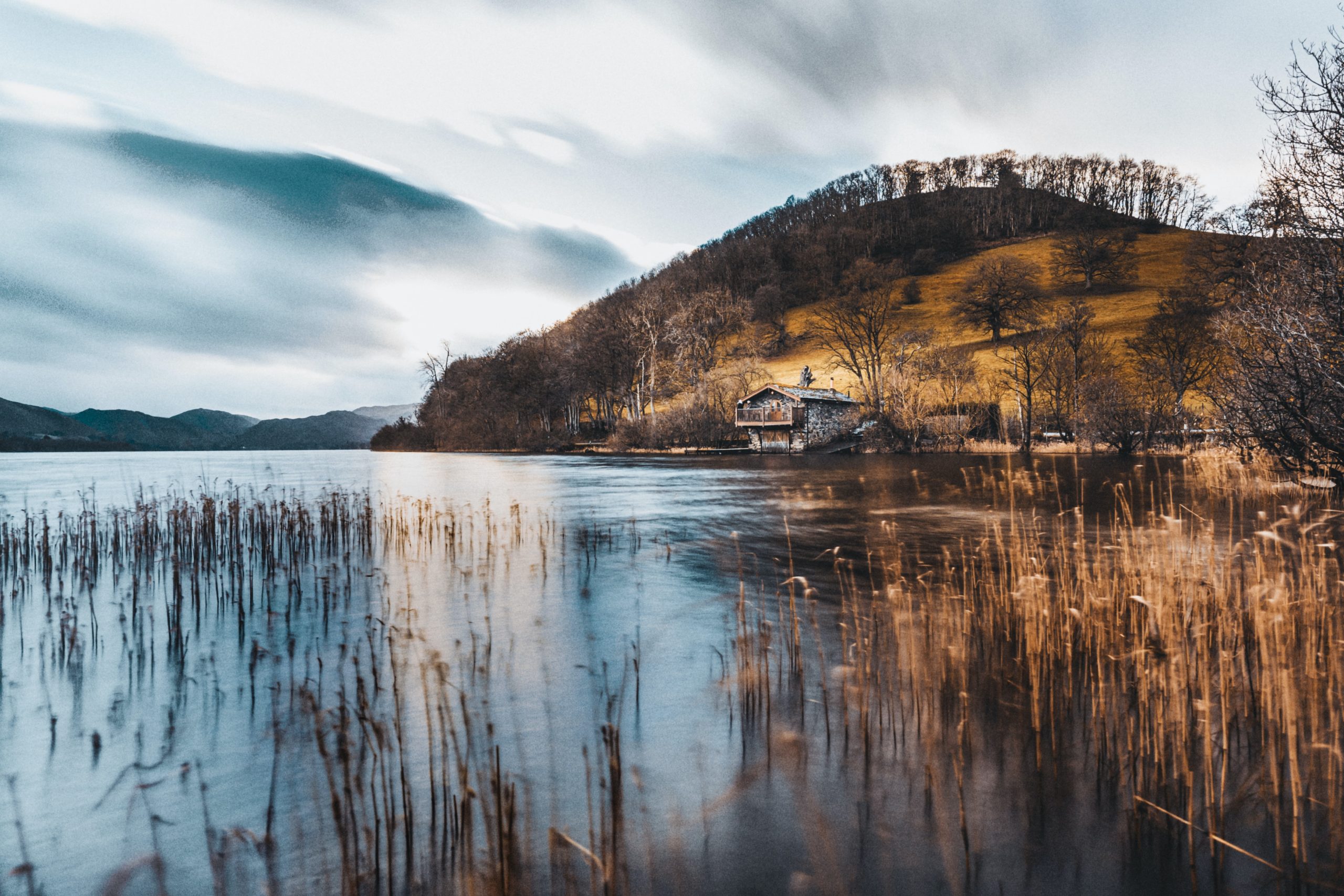
It makes sense that such a wonder of the world would want to protect its beauty, its integrity and the natural formations that make it what it is. But it’s an ambitious wish that they’ve put out to the universe, and one that is admirable in its impactful approach. By 2037, Cumbria and the Lake District aim to become the UK’s first carbon-neutral county, and they are mobilising communities, businesses, and charities to all join the force.
The Zero Carbon Cumbria Partnership includes a wide range of organisations with a key role to play in decarbonising the county at the pace and scale required by climate science, and fundamentally, is supported by the National Lottery. In an interview with The Guardian, Karen Mitchell, the CEO of Cumbria Action for Sustainability (Cafs), said that they are ‘not excluding being able to do it earlier, either. This is a climate emergency and we should be throwing everything at it.’ As it stands, the Lake District is suffering from soil erosion at a dramatic rate and it could look very different in 50 years’ time, due largely to climate change and human actions.
But what does it mean to become a carbon-neutral county, exactly, and what’s in the county’s carbon-neutral plan? Travel is important, and people want to still be able to explore the world, discover new places and play tourist a few times a year. The plan to become a carbon-neutral county supports tourism, recognises its importance but looks to find a way to allow the travel and tourism industry to continue in a more mindful and sustainable manner.
The different initiatives focus on personalised (to the area) and varied approaches to hone in on areas where there is a need to be more green, such as (but not limited to):
Communities and businesses will work together to create low-carbon menus and share good practices, with the potential to develop a Low Carbon Food Charter for Cumbria. An online Low Carbon Food toolkit is being created to help the food sector to share experiences, learn more about the carbon footprint of food and how it can be reduced. The project will also help the public and communities to understand more about low-carbon food and inspire local action.
This project will explore a new model of food growing to increase plant-based food production in Cumbria, reduce food miles by working in partnership with local retailers, and offset carbon usage of local distribution through agroforestry. One aim of this project is to help set up a cooperative bringing together farmers to grow fruit, vegetables and cereal crops to be enjoyed by local people, diversifying farm businesses and generating income.
Funded by the Department of Transport through a £6.9 million initiative, this project aims to change how visitors travel to, from, and around the Lake District, with a particular focus on more sustainable travel methods. Naturally, this kind of set-up will allow other county’s to take inspiration and learn how it is possible to reduce carbon without impacting vital tourism.
With walking such a popular pastime for those visiting the Lake District, Fix the Fells has been put in place to raise awareness of mountain and footpath erosion. This is a brilliant example of a personalised approach.
Working alongside owners of holiday cottages and letting companies, this project aims to reduce carbon emissions and the costs of running traditional cottages.
It’s initiatives such as these that other popular tourist destinations can take inspiration from for their own carbon fighting pioneering – in many ways, it can be seen as an eco-roadmap for more green travelling to follow. Much of the focus on how the Lake District plans to lead the way is put into realistic and reasonable initiatives – ones that can be picked up, worked on immediately and have a clear route to success.
For a popular tourist destination such as the Lake District, becoming carbon-neutral won’t come without its fair share of considerable challenges, after all, the place is visited by around 50 million people per year. This, however, is the pinnacle issue in sustainable travel and tourism, and one that many tourist destinations across the world will face. The focus, therefore, needs to be on allowing people to visit in the most sustainable way possible.
One organisation that is making huge movements is the Lake District National Park Authority who, after 12 months of carbon emission reducing initiatives, are working towards being a carbon net zero operation by 2025. They make up one of the 70 members of the Zero Carbon Cumbria Partnership, who are leading the drive to cut emissions across the county. Some of the many admirable ways they are going about their pledge are through electric vehicles for staff, more home working, and saving on utilities. What’s worth noting, is that these are all manageable day to day steps that many other people could follow suit on.
Inspired to take a trip to the beautiful Lakes this autumn, and support regenerative tourism in the process? We thought you might be, so we’ve put together a little guide below. But remember, go about your journey as mindfully and responsible as possible.
We’ve put together a list of our favourite things & places to stay in the Lakes!
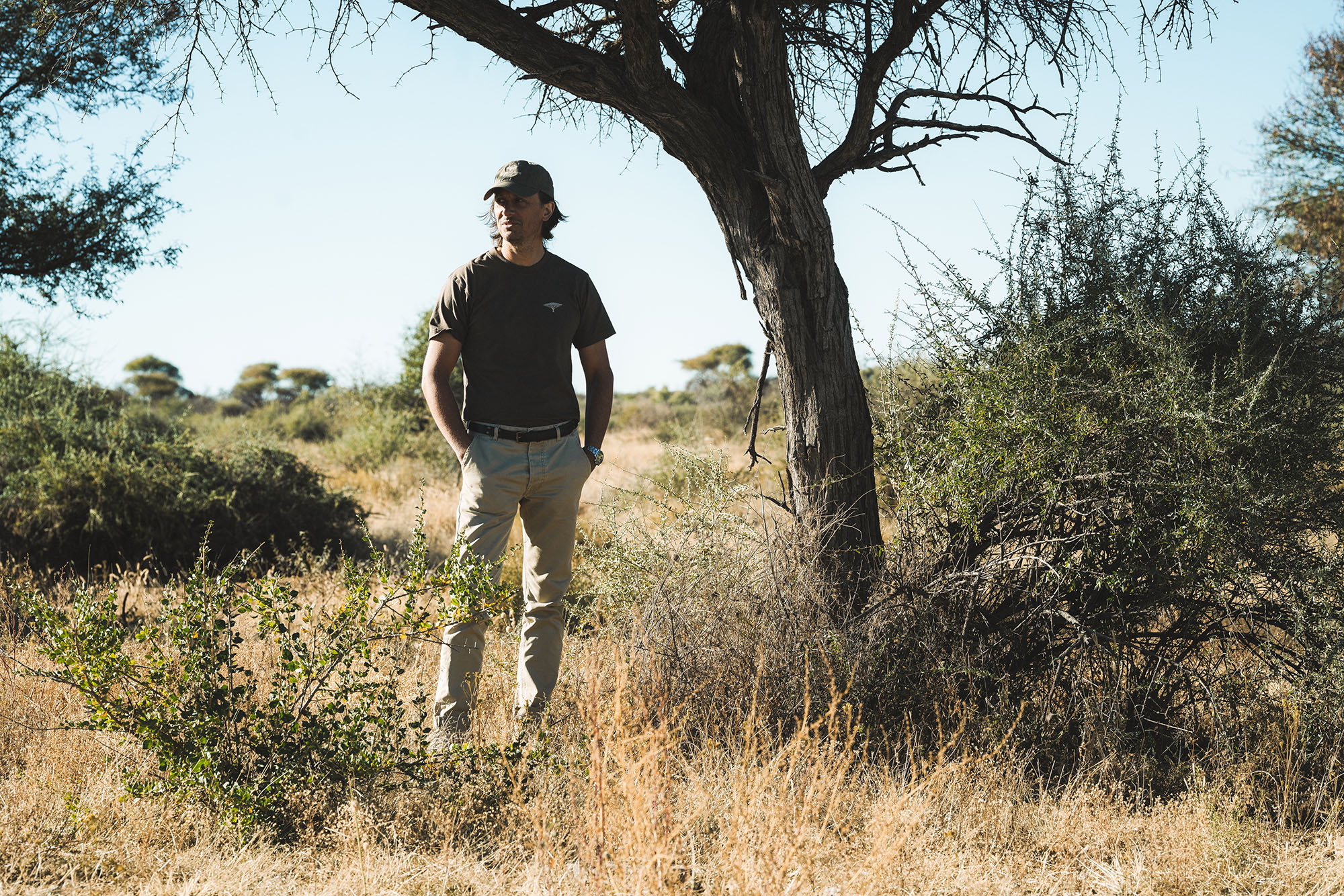
As passionate hospitality professionals, we have the privilege of discovering and connecting with local communities, providing travellers with the opportunity to experience a destination in the most beautiful and authentic ways possible. For example, wandering through the small markets with a local chef will give insight into the way local people really live. To me, empowering local communities is just as important as choosing a destination. We should be able to help the village or even the country in which we develop our projects and keep that in mind whilst creating it.
Often, sustainability is seen as unreachable and far too complex for a company to apply on a large scale. The truth is, even the biggest companies can put sustainable solutions in place, step by step. Let’s start with aiming to leave — as much as possible — a positive footprint in the places where we operate. This includes sustainable construction, eco-conception, predominance of raw materials, waste management, use of local techniques, and empowerment of the local workforce. Sustainability must be planned ahead of construction and present from start to finish in the creation process.
It has never been more important to help preserve the environment and wildlife. The Amazon rainforest has been burning for months, and that is just one example of our planet under threat.
Each one of us has a responsibility in this catastrophe, and I believe COVID-19 is just another consequence of our carelessness. The effects of the virus have had an enormous impact on tourism, especially in secluded and hard-to-access locations, which rely on tourism to survive. Africa-based conservation schemes for instance, many of which are driven by ecotourism, are struggling to make ends meet.
One idea would be to simply travel to these destinations that make much of their living from tourism to help them recover. In the meantime, we must all continue our hard work of preservation and reintroduction to ensure the land and wildlife remain protected. I would encourage everyone who wishes to make a difference during these challenging times to help their local associations, for example by donating homegrown vegetables, fruits, or any ingredients that can’t be sold for aesthetic reasons, instead of throwing them away. Responsible travel may take place around the world, but these good habits start at home.
Image courtesy of Zannier Hotel’s Press Kit.
www.zannierhotels.com
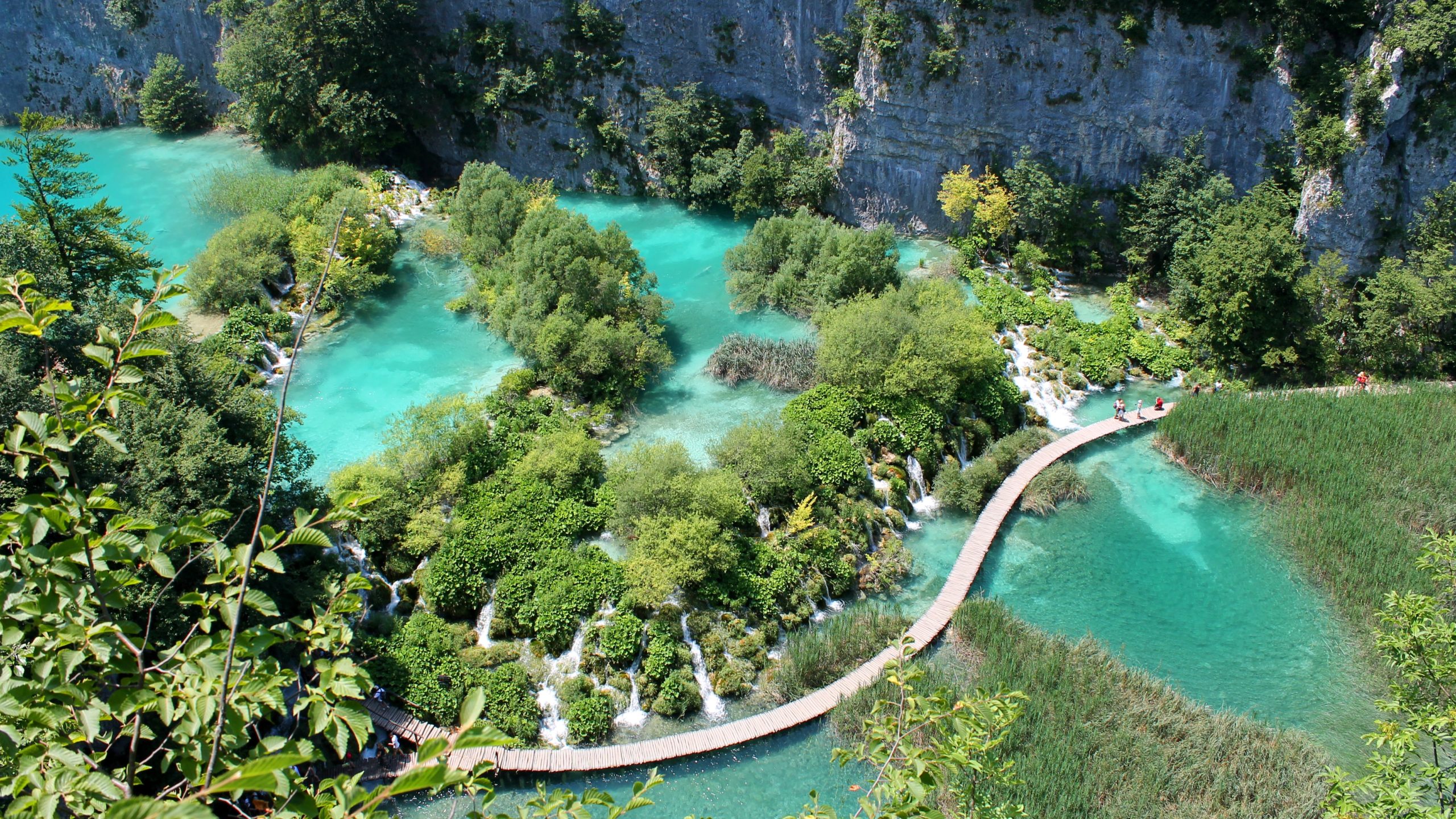
A recent report by global market research company Euromonitor International has ranked the top 30 sustainable countries in the world, based on the analysis of 99 countries, taking into account environmental, social and economic sustainability, as well as the demand for sustainable tourism.
Not only this, but the report also highlights that that over 2/3 of global consumers actively seek to and want to have a positive impact on the environment through their daily actions in 2021. This, combined with the increase in searches for regenerative travel and slow travel, is incredibly uplifting news.
European countries dominate the list, with Sweden coming out on top due to its engagement with sustainability and incredible progress toward sustainable travel. Finland, Austria, Estonia and Norway (in that order) followed close behind Sweden, and are leading the charge when it comes to green holiday destinations. What’s great to see is that there is a clear change in mind-set to resist returning to a volume-driven travel and tourism model. Instead, stakeholders are rallying together to ‘build back better’ through value creation from sustainable tourism.
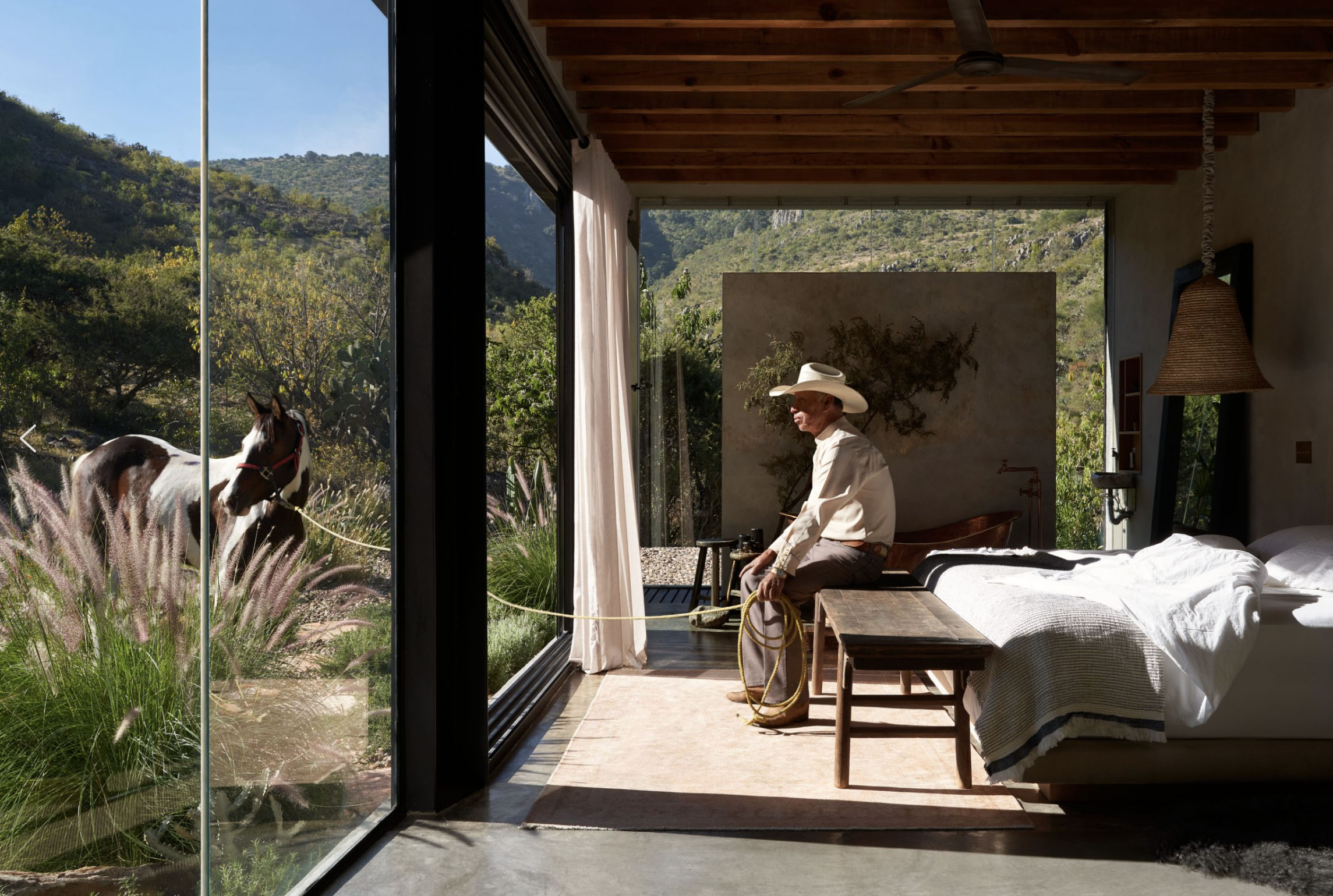
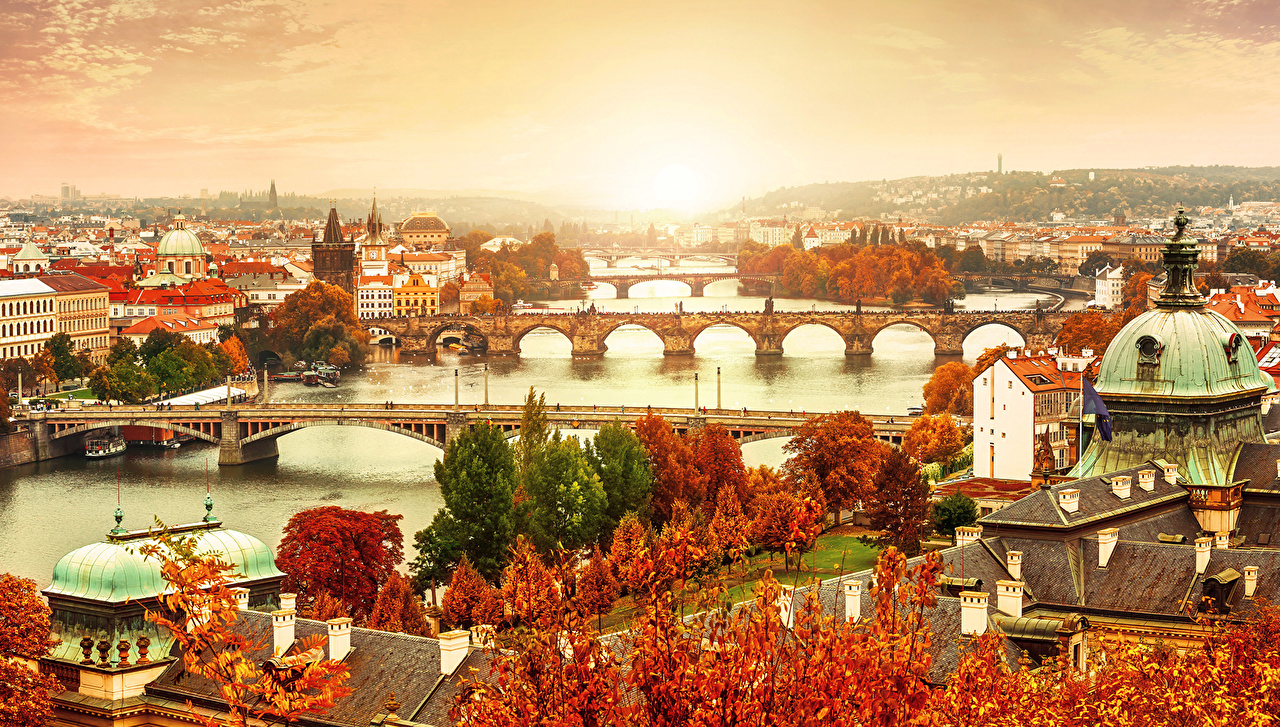
With lockdown restrictions easing here in the UK, we’re all watching with bated breath as the world slowly peels back open. The future of travel is still hazy, but one thing appears certain; moving around the world in 2021 and beyond will be different.
Researchers at NASA found that since February 2020, global nitrogen dioxide levels have lowered by almost 20%. The stats on how air pollution has improved due to the plummet of air travel throughout the pandemic indicates what many previously chose to turn a blind eye to; the travel industry is one of this planet’s biggest pollutants.
As last year unfolded, the planet began to heal in many places. We saw air quality improve in cities, water pollution reduced in seas, oceans, rivers and lakes, a reduction in fossil fuel consumption, ecological restoration and a positive response from wildlife to the absence of humanity. The forced halt on travel gave many of us time to reflect on our lifestyles and rethink the purpose for our holidays as well as our chosen modes of transport, accommodation choices and activities.
While many of us search for creative ways to reframe our holiday habits, travelling out of season is something well worth considering. There are several benefits: it’s a way to counter the impact of over tourism in destinations, lesser crowded areas are safer in terms of social distancing and Covid-19 precautionary measures, it allows you to enjoy locations in a more peaceful way and more often than not, it has financial perks too.
Overtourism is when too many people saturate a single destination. The results of this can negatively impact local communities, wildlife and nature, deplete resources reserved for native inhabitants, cause the degradation of historical monuments as well as the environment and lead to gentrification of certain areas. Several factors are to blame for overtourism, including budget airlines, the increase in popularity of private rental services such as Airbnb and of course, a growing population. In Porto, Portugal, you’ll find 183 tourists for every 100 locals – a statistic which is shocking but also not too rare. Some particularly fragile natural habitats such as the Galapagos Islands have imposed restrictions in order to provide some respite from a constant influx of tourists and Peru’s Inca trail allows a limited number of 200 trekking permits per day.
Choosing to travel out of season means visiting places at a time of year when they’re not typically popular destinations. Of course, if you have children who are in school it can be difficult to travel off-season due to school holidays, but you could counter this by exploring destinations which aren’t at peak season during the summer months.
Travelling to places at times of year that aren’t commercially popular means you’ll be able to enjoy surprising and unique experiences. Fewer crowds will allow for a more intimate and authentic exploration of cities that are usually filled with people, and you won’t have to queue as long to visit monuments either.
Typical ski destinations such as The Alps are just as beautiful in the spring months and there are plenty of activities to enjoy. Swap snowy peaks and apres-ski for fresh mountain air, Nordic walking, mild-weather hikes, outdoor yoga, spa breaks and picnics.

While most travellers opt to head to Fiji when the weather is cool and dry, travelling during the wet season in February also has its perks. The rain showers are usually fleeting, making way for plenty of sunshine and for scuba divers and snorkelers, less people in the waters means you’re likely to see more fish and vibrant coral reefs.
Santorini is one of Greece’s most popular destinations but meandering through the small streets of Fira or Oia in the peak summer months can be anything but relaxing and enjoyable when there are huge crowds to contend with. Try visiting in Spring when the weather is mild, hotels have reduced rates, you can enjoy unobstructed sunset views and it’s easier to get the perfect seafront restaurant booking.
Czech Republic’s high season is from June to August because that’s when the weather is at its warmest, but come late October, it’s just as breathtaking and autumn colours turn the trees all sorts of vibrant shades of yellow, orange and red. Views are perfect for practicing your photography skills, small villages tend to put on local music and art events, in main cities like Prague the tour groups tend to be much smaller, and it’s also mushroom season so there’s plenty of foraging to be enjoyed.

From March through to mid-May, Hanami (cherry blossom) season is the most common time to travel to Japan, followed by Koyo (red maple leaves) season. In winter, however, you’ll encounter the least tourists and a unique winter wonderland. Japan is infamously expensive, but prices drop considerably at this time of year and you’ll be able to visit Mount Fuji and other well-known landscapes under a blanket of snow.
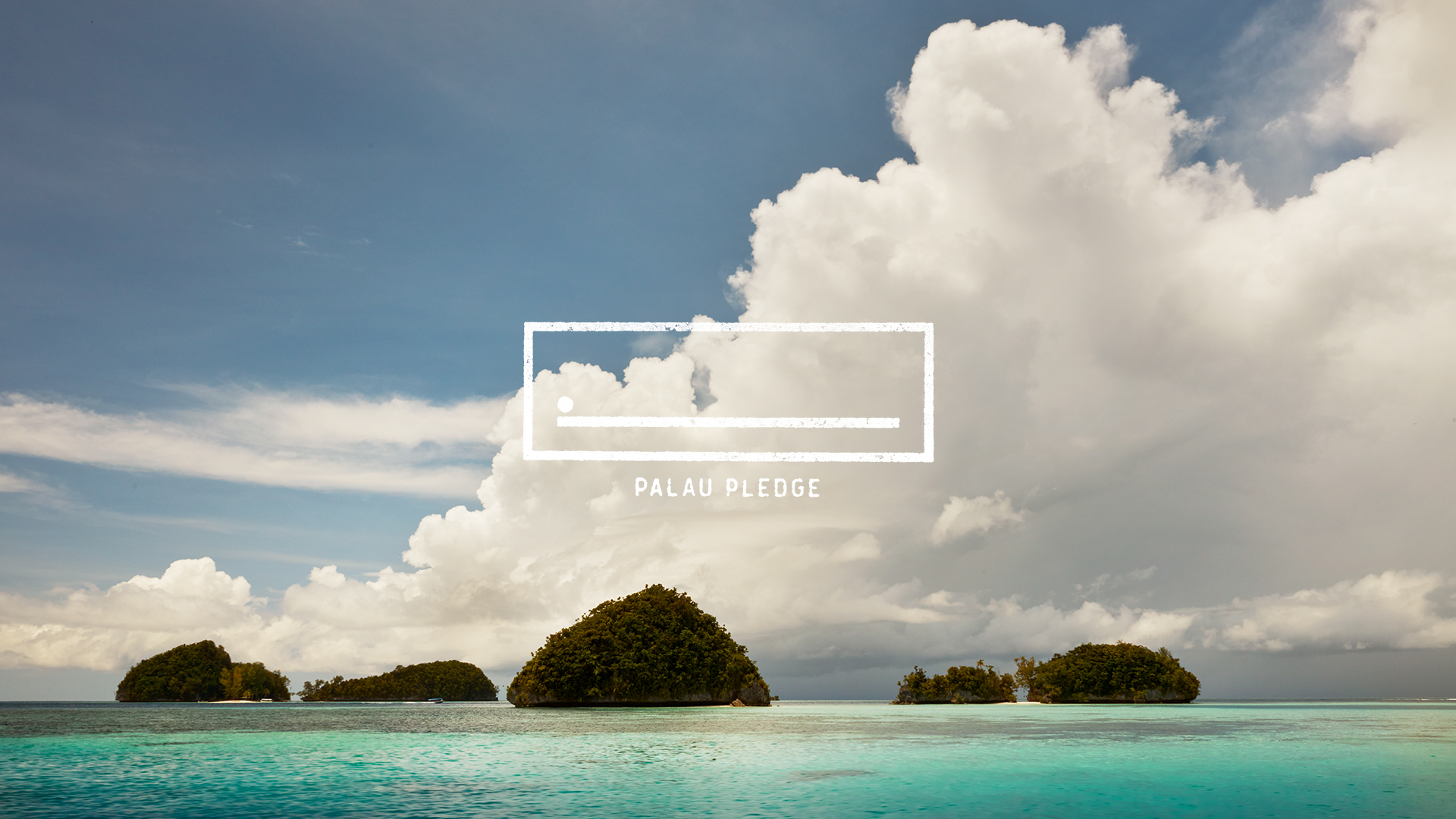
Palau is a place leading the charge when it comes to environmentally conscious travel, pioneering a new model in sustainable tourism. They’ve been ahead of the curve for a while now, with the government having established one of the world’s largest marine sanctuaries, as well as banning tour operators from utilizing single-use plastics and Styrofoam. With the help of Sustainable Travel International, since 2020, they have also been protecting its marine environment through the adoption of the world’s strictest national sunscreen standard.
Now, Palau Bureau of Tourism has recently launched a new project, pulled together with the aim to mitigate its tourism-based carbon footprint. The organisation has partnered with Sustainable Travel International and Slow Food, and is looking to develop a transparent carbon-management plan. According to a report by the Palau government, climate change has been recognised as the greatest challenge for the sustainable development of Palau. ‘Thus the climate change policy cuts across all aspects of sustainable development.’
It’s perhaps not surprising that, as a remote island nation, made up of an archipelago of 500 islands in the western Pacific, the Republic of Palau is under threat from climate change. Rising sea levels are a terrifying concern, as well as over and high-volume tourism (or tourism without conscious awareness, at least). In fact, over 25 per cent of Palau’s landmass sits under 10 metres above sea level, and The Green Peace Islands in Peril report estimates that several of Palau’s inhabited islands may disappear within the next 100 years.

With sea levels rising, intensified tropical cyclones and weather bringing increasing threats, the infrastructure of Palau has to adapt. That’s not to mention the fact that coral bleaching endangers marine life and the beauty that tourists want to see, and that climate change could disrupt supply chains, leading to food insecurity.
It’s for this reason that Palau is taking action. Tourism is Palau’s main industry, so it’s vital to maintain and develop this, and support this in every way possible. To put it into perspective, in 2019, more than 89,000 international tourists visited the country, which has a population of just fewer than 22,000. The United Nations Development Programme states: ‘Tourism is the country’s economic base and is an extremely important industry, contributing US $67 million, or 47%, of its Gross Domestic Product (GDP).’
But, it’s also crucial for us to recognise that tourism is ultimately driving forward the negative impacts of climate change. Tourists fly in from overseas so, of course, fossil fuels are increased and most of these tourists consume overseas imports, causing dollars to leave the local economy. In fact, 85-90% of the country’s food is imported from abroad, producing carbon emissions.

According to the Palau government report, ‘policy concern remains the need for finding a balance between utilizing the natural environment as a driver of economic growth for tourism, and preserving the environment for the cultural, social and economic well‐being of current and future generations and for future tourism development.’
So, what will the project do and how will it work? Excitingly, it is taking an innovative destination-level approach that includes promoting local food production within tourism and developing a carbon management program for tourists – breaking ground with this initiative in the hope that it inspires other destinations.
As part of the initiative and as a beautiful, almost poetic, way of ensuring people declare something worthwhile at customs, Palau is the first nation on earth to change its immigration laws for the cause of environmental protection. Upon entry, visitors need to sign a passport pledge to act in an ecologically and culturally responsible way on the island, for the sake of Palau’s children and future generations of Palauans. Children from all over Palau helped draft it and as the initiative continues to reach out to Palauan businesses, they’re continuing to work with the next generation of Palauans to shape and develop the pledge.

Similarly, to compensate for tourism’s unavoidable emissions, the project will develop a first-of-it’s-kind carbon management programme for tourists to Palau. This will be in the form of a new online platform, on which visitors can calculate and offset the carbon footprint that is associated with their trip. These offset contributions will work harmoniously with Palau’s marine conservation, and will be invested in blue carbon initiative such as mangrove restoration. It is estimated that this unprecedented move has the potential to raise over USD $1 million a year for these carbon reduction initiatives.
In response to the need to encourage regenerative tourism as well as sustainability, the project will increase the proportion of food sourced from local producers and work to reduce the hospitality industry’s dependence on imports. It will also celebrate the islands’ gastronomic heritage, build the capacity of local farmers and fishers and create income-generating opportunities for local communities.
‘The rapid growth of an unsustainable tourist industry based on broken food systems has been a key driver of the climate crisis and ecosystem destruction,’ says Paolo di Croce, General Secretary of Slow Food International. ‘This project represents the antithesis, a solution that strives to strengthen and restore value to local food systems, reduce the cultural and environmental damage caused by food imports, and improve the livelihoods of food producers both in Palau and beyond.’
With such enormous potential to turn the tide on climate change and act as a visible roadmap for other destinations to follow suit, there is a real chance this could inspire others to look at their climate resilience strategies.
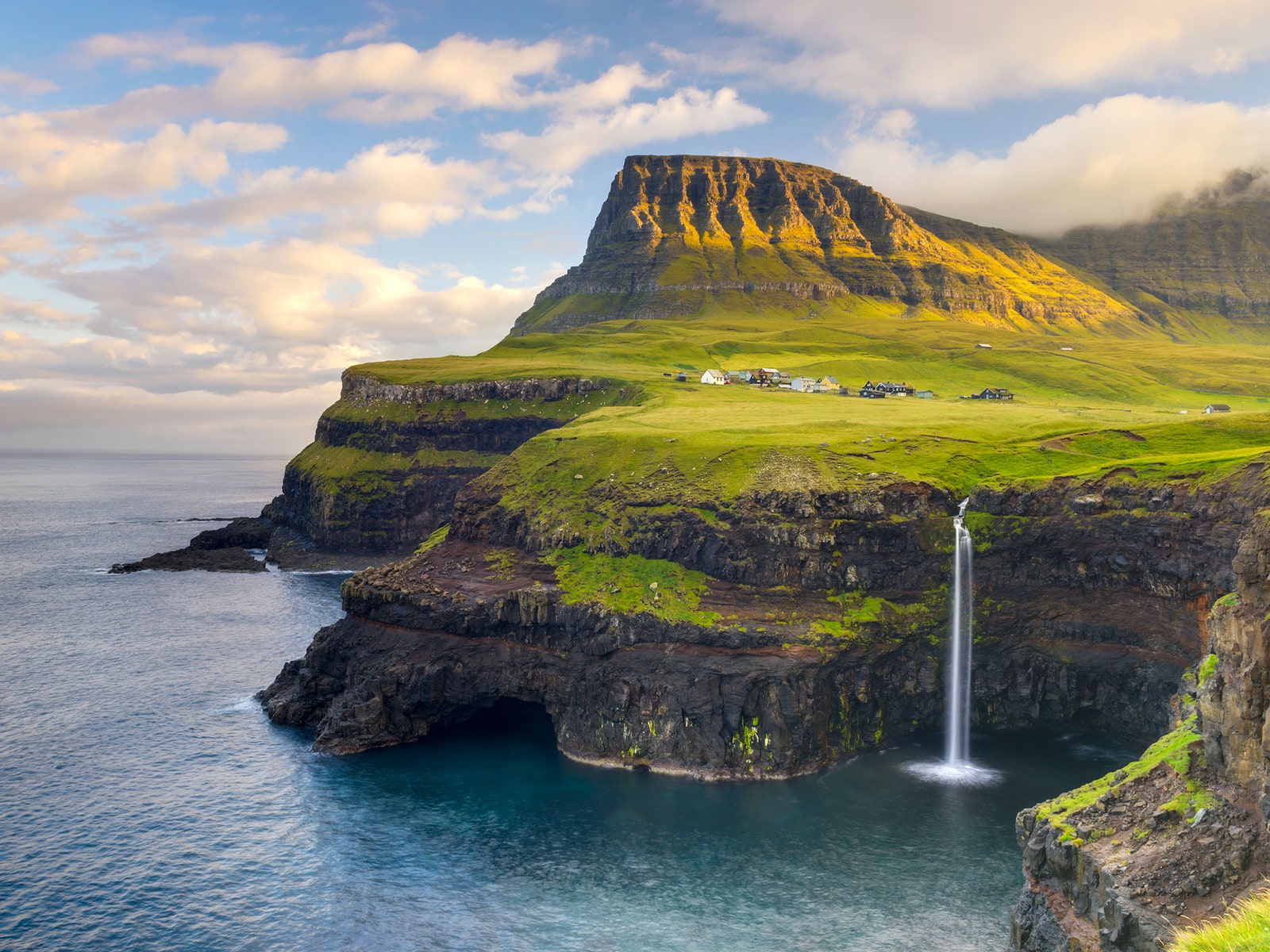
Regeneration: the act of improving a place or system, especially by making it more active or successful. Perhaps the biggest plus to come out of the Covid-19 catastrophe is the upward curve being seen in global environmental awareness – often, when there’s devastation, ground-breaking changes are shaped.
In an exciting development, everywhere you look at the moment, you’ll find people talking about and pioneering the idea of regenerative travel – which, ultimately, is a pretty brilliant start to 2021. This week, Visit Scotland became the first national tourism board to declare climate emergency and to outwardly focus on commitments to promote regeneration. Turn elsewhere and you’ll see that the Global Wellness Summit placed regenerative travel within its top wellness trends forecast, declaring it as a concept of ‘leaving a place better off than you found it.’
But what does it really mean? The term was debuted in 2020 by Elaine Glusac, a New York Times journalist who wrote: ‘Tourism, which grew faster than the global gross domestic product for the past nine years, has been decimated by the pandemic […] If sustainable tourism, which aims to counterbalance the social and environmental impacts associated with travel, was the aspirational outer limit of ecotourism before the pandemic, the new frontier is “regenerative travel,” or leaving a place better than you found it.’

Regenerative travel goes further than blatant eco-credentials and focuses on community, education, wellbeing of locals, as well as conserving the environment. It’s not enough anymore to simply count a token effort of sustainability activity. You must challenge things, take it further and really look to making places better and maintaining them for future generations. Just like regenerative agriculture gets to the very core of the soil, regenerative travel has to dig deep. As travellers on the move post-pandemic, we must aim to give as much, or more, than we are taking.
Of course, sustainable travel is about carbon footprints, ecosystems and nature too, but for real regeneration, there needs to be a focus on communities, real people and the direct economic benefits of tourism too. Essentially, we have to see that we’ve moved into the long game – no short-term fixes or saying but not doing anymore. As Sam Edwards, Skyscanner’s Sustainability Lead said, we have to ensure that ‘local communities enjoy the direct economic benefits tourism can bring to where they live. This means building awareness, educating, investing in technology and offering consumer choice. It’s about promoting intelligent tourism growth and looking at both over-tourism and under-tourism, too.’
We seem programmed to believe that more money in business equates to unethical actions and progression – but what if we changed that? Flip on its head the idea that more money, more success and more business in the travel sphere means that greed succeeds and harm is caused. Instead, we can use it to create opportunities for people, places and environments. Luxury sustainable projects such as The Red Sea Development place improving the sociological and environmental conditions of the host country at the very heart of their actions – these are the exciting developments to look forward to post-pandemic.

Aiming to set new standards in sustainable development, the regeneration project encompasses an archipelago of more than 90 pristine islands, miles of desert and dramatic mountain landscapes, and is creating opportunities for local communities. Cutting-edge technology will help to effectively limit over-tourism and preserve the environment. In particular, the Red Sea Project will mitigate carbon dioxide emissions, waste production, and light and noise pollution, maintaining the destination at a level equivalent to a Marine Protected Area.
The Future of Tourism, too, is a coalition of six non-governmental organizations that have come together to stand united in an appeal for change. They can see the requirement for a fundamental shift in how tourism works, to meet the needs of destination communities and their environments, and are actively campaigning to pioneer this shift. A large part of their work is to show that tourism, by its nature, involves the destination as a whole – its ecosystems, natural resources, cultural assets and traditions, communities, aesthetics, and built infrastructure. While people are using their time grounded due to Covid-19 to think about the future, they’reeir asking everyone to come together to support their global community and guiding principles.
But, aside from supporting and signing along with platforms such as the above, at its simplest, what can we do?
1 – Use reputable and forward thinking booking platforms such as Regenerative Travel. It showcases sustainable, visionary destinations and makes it easy and accessible for those who love to actively make a positive change in the world do so.
2 – Deliberately pick hotels and resorts that are holistically prioritising existing communities, playing a vital role in bettering wellbeing for locals and reducing their environmental impact.
3 – Avoid places suffering from over-tourism – actively seek out destinations that are less frequented.
4 – Continued community support – explore how your regenerative travel practices can continue once your holiday is over.
5 – Think about where you spend your money. Travelling means you will have costs, so look to who you can truly benefit with this money – shop local and create mindful connections with local communities.
Consider regenerative travel is to be the focus of the next few years (and, hopefully, long into the distant future), what does this mean to you? If you want to contemplate your next ethically thought through movements and get excited for plans in the future, take a look at these places doing more than just their bit for the community, the planet and the wider world. Let’s work together to make this more than just a post-pandemic trend.
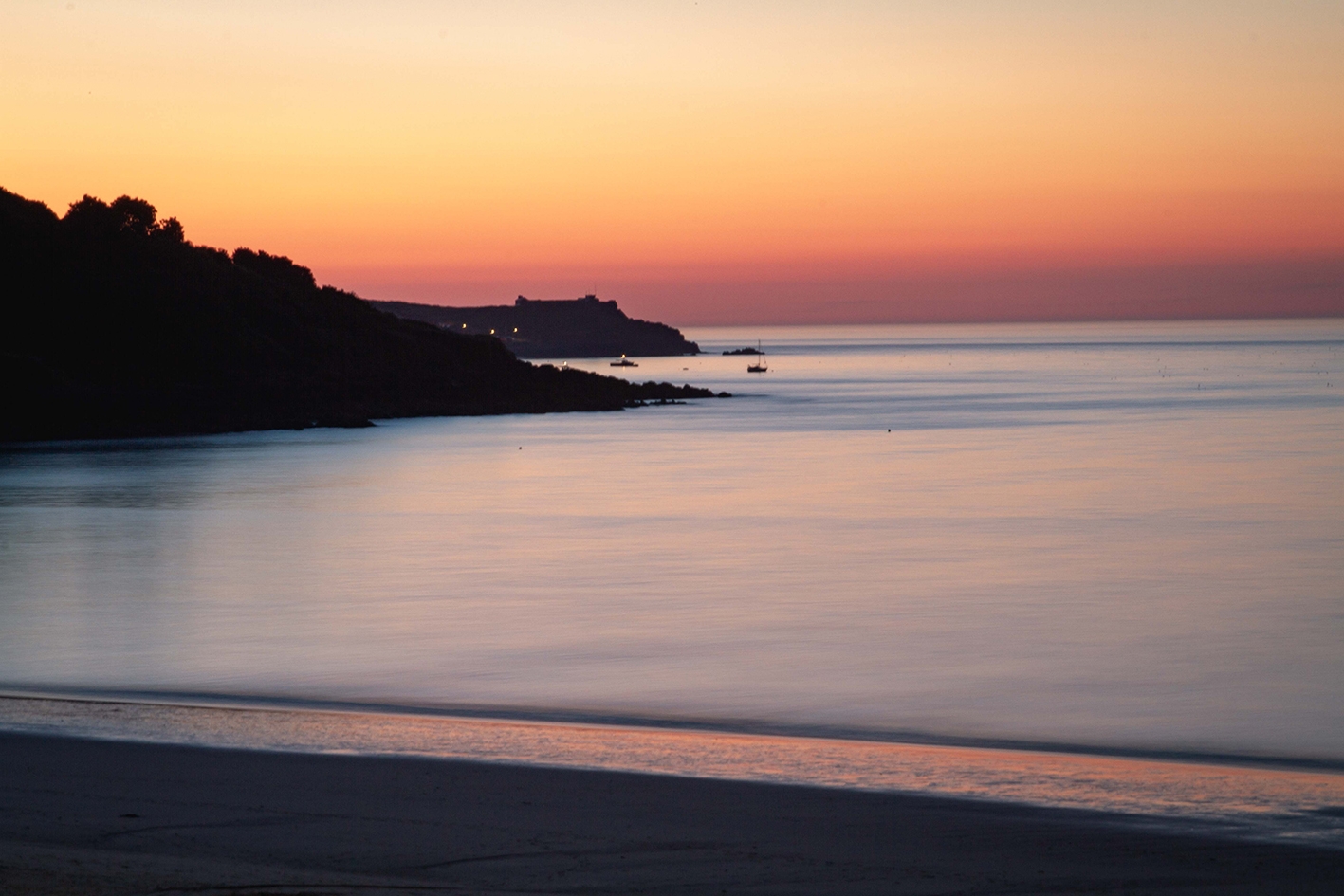
Throw open the curtains at Carbis Bay Hotel and you’re met with endless blues, sand so white you could be in Barbados and, if you’re lucky, even a pod of dolphins bobbing around in the calm waters. This is the location – one that is so engulfed by nature and environmental celebration – that has been chosen as the host of the inaugural G7 Summit.
The annual three-day meeting of the Group of Seven leaders has the power to shift the direction of economic growth. To host the meeting somewhere so intrinsically dedicated to supporting sustainability is exciting, with Julian German, the leader of Cornwall council, optimistic that the legacy of doing so will help the county move forward with investments in green energy.

The 45-room hotel, which overlooks a Blue Flag beach 20 minutes’ walk from artistic St. Ives, is one well worth visiting. Both the hotel, housed in the original cliff-side property, and the new self-catering lodges are stunning, but the Beach Lodges seriously won me over. Built using kebony, a sustainable product made more durable and aesthetically appealing through the infusion of bio-waste (a process called kebonisation, that permanently modifies the cell wall of the timber), they are incredibly low carbon.
Design-led, without being overdone, there’s no sacrificing style for a family-friendly affair – think hessian, slate and modern art. As if direct beach access, hot tubs in private gardens and the amenities of the hotel (breakfast can even be brought in hampers to your door) wasn’t enough, you can also expect freestanding copper bathtubs looking out over the ocean, and wake up to waves lapping at the garden below.
Pioneering in its sustainability initiatives, it’s no surprise that the G7 summit felt this hotel was a worthy host. With waste disposal at the forefront of their green ways, and an on-site Energy Centre that provides a carbon saving of approximately 70-tonnes per annum, Carbis Bay has been pushing ahead with changing the face of the future for a while – notably in hospitality realms.
As a travel writer, I often find that I’m drawn back to certain places or that situations lead me back to one place time and time again, and Carbis Bay is one of those. A few years ago, I stumbled across two inspirational men who’d set up a company called Oltco, a company that produces resin-based solutions from waste plastic. It transpired that, soon after talking, Carbis Bay became the first hotel in the world to install pathways and a promenade from Oltco, using the equivalent of 3.5 million plastic straws from the ocean.
Considering the hotel practically resides in the ocean, it would be rude not to consider the plastic plight, but Carbis Bay truly delivers, something that led to it being awarded the AA Eco Hotel of the Year in 2019. Prior to Covid-19, the hotel also partnered with ocean campaigners Parley to remove 50 metric tonnes of plastic from the sea. Clearly, protecting the ocean is a key part of the identity of Carbis Bay and their devotion to the water is seen through many of their in-house enterprises.
It’s a special place with a special soul, and couldn’t be a more fitting destination for a revolutionary event. If you like the idea of scouting out the location before the rest of the world descends, now might be a good time to get a pencilled-in date in your diary.
One of the most well known eco-hotels in the UK, adults-only The Scarlet is perched on rocks on Mawgan Porth beach and has 111 different ways it’s sustainable.
Having also won an award for being one of the best sustainable hotels, The Nare overlooks beautiful Carne Beach and adopts initiatives such as re-harvesting rainwater.
Another luxury hotel with a gold-standard green policy, The Greenbank Hotel is in bohemian Falmouth and a beautiful place to stop.
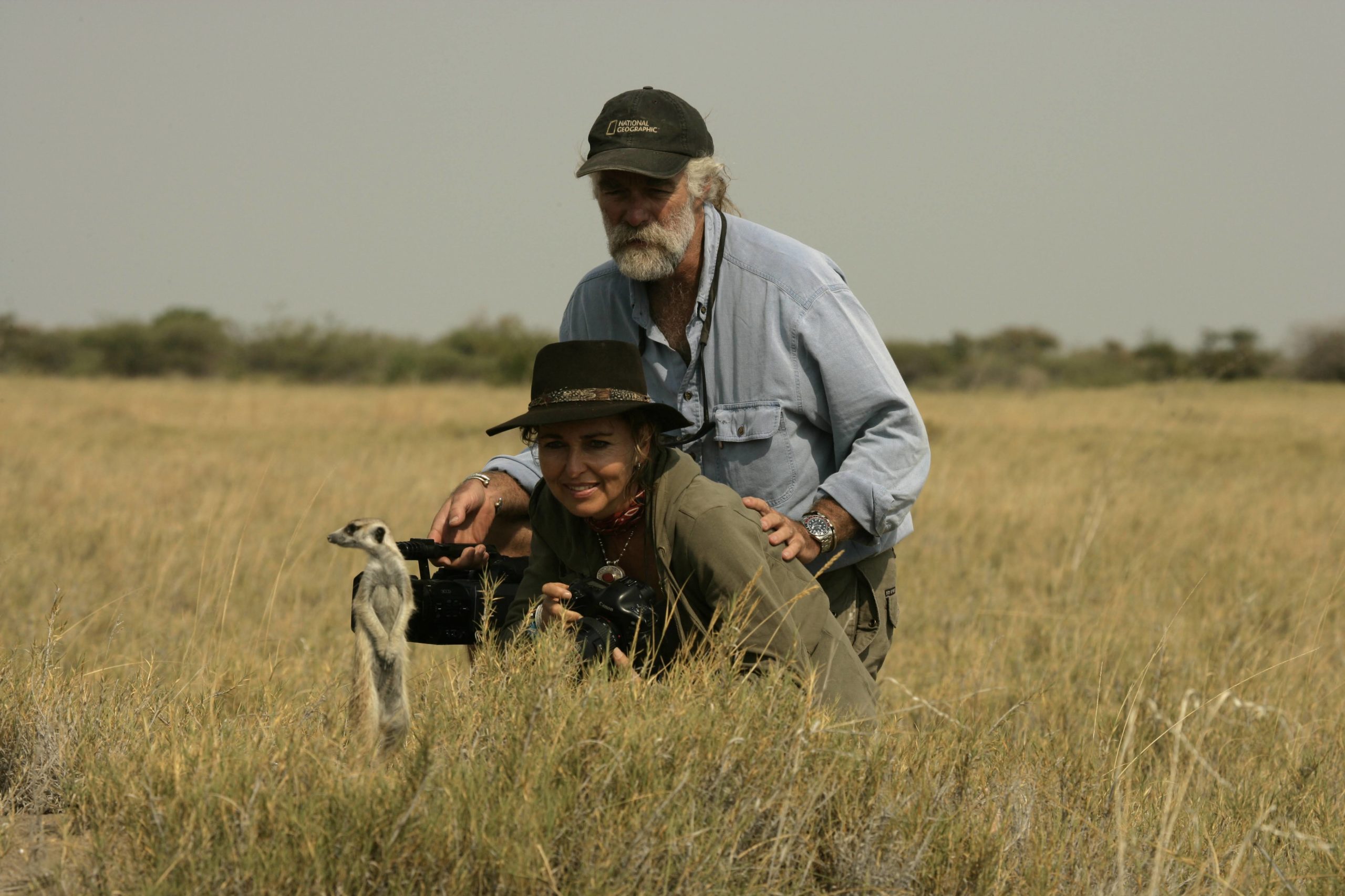
Africa is facing an additional pandemic, fuelled by the side effects of the current one and one that will result in a step back to more poaching, more poverty and more ignorance. Once we begin to ease our way out of lockdown life, the continent is relying on a new wave of interest from travellers and deeper, more considered tourism to aid its way out of it.
Fortunately, the impact of Coronavirus has inspired people to protect and nurture the places they visit. While seeking more fulfilling experiences post-pandemic, many more people than before are looking at ways they can travel while giving back. According to a recent report from booking.com, 67% of people want their travel choices to support the destination’s recovery efforts.
While perhaps only making a small dent in recovery from the catastrophic impact of Covid-19 in Africa, this is good news. Ecotourism has provided one of the biggest supports to Africa in the last decade, and without it, everything shifts. As The Financial Times reported: ‘The effects of Covid on conservation tourism in Africa have been seismic – on a continent where, in 2019, tourism contributed 14.7% of Namibia’s GDP, 10.7% to Tanzania’s, and 8.2% to Kenya’s. According to 2019 figures published by the World Travel and Tourism Council, wildlife-based tourism specifically generated more than US$29bn annually for Africa, and employed 3.6 million people.’
Conserving nature in a time of crisis is a sobering thing – conservation has all but been forgotten by the wider world throughout the pandemic. And, it’s important to note, it’s not just the animals. People are quick to assume that conservation and sustainability stops at the eradication of poaching, the care of animals and natural landscape recovery, but, of course, it goes so much deeper into communities too.
This is something that conservationist filmmakers, National Geographic explorers and writers, Dereck and Beverley Joubert have prioritised since the inception of Great Plains Conservation. ‘It’s interesting because the question about how we’ve reacted to Covid is almost an extension of how and why we started Great Plains,’ explains Dereck.
Having spent many years exploring across Africa and identifying the places and communities that were going to erode and decline, Beverley and Dereck established Great Plains in order to address this. ‘We started to buy up land to put an ecotourism model on to fund it. We look at areas that are vulnerable and how we can make them better, but it’s the community that is integral and at the heart of it – we invest heavily in the people.’
12 years in, Covid struck and, clearly, tourism was going to come to a halt but their conservation work couldn’t afford to. ‘We would rather collapse the company than lay anyone off, so we immediately transferred as many staff as possible into frontline conservation work,’ explains Beverley. ‘Many others have not been able to do that so joblessness is rife and disillusionment follows. Poaching, because of this, has gone stratospheric – there are places in Africa that have lost 80% of their wildlife in this last year.’
Great Plains established Project Ranger in March to combat this, an initiative designed as a solution to keep front line conservationists in the field, stopping poaching and supporting those who give so much each day to protect Africa. Contributions will supplement budget deficits with local ground partners by funding salaries, training, and operations of wildlife monitors, rangers and anti-poaching personnel.
Largely, this is a twofold initiative. ‘We really need to make sure that when Africa opens up again, there’s actually something to come and see – this keeps communities alive and protects wildlife,’ says Dereck. ‘But it’s also about keeping dreams alive, to ensure there’s a message of hope going out and that we’re protecting what we have today and focusing on what we need for tomorrow. It’s about education, looking to the younger generation to become conservationists in the future. We hang on the word hope – getting the rangers out there again, spreading hope to the kids.’
Of course, Africa isn’t alone in seeing the effects of little tourism, but it becomes problematic when you consider the conservation status of the continent pre-Covid. However, as a positive of the last 12 months, in a year where people have craved a renewed connection with nature, the pandemic has allowed for the realisation from many that ecotourism really is crucial.
So, what can we, as travellers, do to help? The key, it seems, is not necessarily in travelling less, but in being more mindful going forward. Delve into the why and what behind your travel choices. ‘It’s got to be about more than sending money. It’s a great opportunity for us all to be reflective and really think about the way that we engage with the planet. It’s time for us to redraw those contracts and renew our vows,’ Dereck suggests. ‘The very worst thing to do is to hunger for going back to normal – I don’t think normal was good. Think about the way you engage with the planet through travel, and with each other, and discard the things that are bad.’
As we chat, we reflect on how, as Covid-19 started, the media reported about new wildlife happenings, animals relaxing and cleaner air quality and I agree wholly that we should remember that. ‘I would hope that we want to retain the good things and ease back into travel with meaning – start planning that now,’ Dereck continues. ‘It would be wrong to say that the world was better when no one was travelling, as it leads to isolationism and xenophobia. Find the travel and hospitality companies that are doing it right.’
As always, Dereck and Beverley are ahead of the game with their initiatives and actions at Great Plains Conservation. The preservation work the Joubert’s do constantly is inspiring, and they’ve utilised this year to refurbish old camps and create incredible new ones too – built with sustainability and socio-cultural travel in mind. Although you can still consume meat in their restaurants, of course, they’ve introduced vegan cuisine at all of their camps. Following on from the idea of using this time of less travel to reflect and make small, manageable changes going forward, Beverley encourages us to consider reducing our meat intake. ‘Everyone could simply reduce his or her meat consumption to 80% plant-based and the rest could still be animal protein,’ she says.
They’ve also introduced additional private jet safari experiences. The private jet charters include a specially curated itinerary ensuring privacy and safety for small parties that stay in the same camp and travel between camps via private jet together. Utilising private lounges, immigration services and guides, chefs and butlers, the high-end service complements the fact that, once you are in Africa, space, clean air and natural social distancing surround you. ‘We’ve made it so that people can stay longer too and work from our camps,’ says Dereck.
While uncertainty and anxiety in travel prevails, lending itself to bubbled travel is a brilliant initiative from Great Plains. And, although it might not be for everyone, there’s no doubt that it’s attractive to and an appealing way to travel for wealthy individuals looking for a luxury experience.
When it’s safe to do so, I can’t wait to put down plans for an extended visit to Africa and it’s humbling to hear that the local communities involved with Great Plains are looking forward to welcoming travellers. ‘When tourists came back for a short while in the December period in Kenya, we saw how the Maasai people who work in all our lodges embraced the fact that tourism could come back,’ says Beverley.
‘They were passionate about getting back to representing their culture, the land and the wildlife. It’s a dedication, it’s not just a job for the community and they are so excited to welcome you all back.’
For more information on Great Plains initiatives and their new camps for 2021, take a look here.

Here in London, Lockdown 2.0 has ended and the majority of us are bundled up at home, a place which has now become our office, workout studio, and school for those with children. As we slowly meander through the final days of this tumultuous albeit memorable year, there’s one main topic on a lot of our minds…a holiday.
The dates may still be a little unclear and the destination yet to be decided on, but while you hash out the details, we are sharing some achievable ways to make your escape – when it eventually comes – one which is as low-waste as possible.
An upcoming holiday often makes us want to buy shiny new things to take with us. Then there’s the airport duty-free lounge, where ‘travel minis’ and ‘handbag-sized’ beauty products and toiletries seem convenient and attractive, but the vast majority of these products are made from single-use plastic and are non-recyclable.
Around 150 million tons of disposable plastics are produced each year yet less than 12% actually gets recycled. The rest of it ends up in landfill, eventually breaking down into microplastics which make their way to our oceans and leach toxic chemicals. The most efficient way to prevent this on a personal scale is to limit or completely avoid the use of single use plastics. So the next time you’re packing a suitcase for a trip, you may want to consider these simple solutions to not-so-sustainable travel essentials and try out reusable items which are hardwearing and more cost-efficient in the long run. Whether you’re an over-packer or a less is more explorer, the simple swaps below will help you adopt sustainable travel habits and many can be applied to everyday life too.
Aside from what you pack, there are many ways to make the way you travel more sustainable and planet-friendly. From choosing your destination and accommodation to your mode of transport and offsetting your carbon footprint once you’re back home, some habits may take a little extra work, but it’s a worthwhile endeavour. Keep a look out for future articles sharing our insights on this!
One thing’s for sure as we move into 2021; we want the trips we take to leave more of an impact on us than we do on the planet. The way I see it, if we don’t travel consciously now, our future generations may not be afforded the luxury of travelling at all, because the beauty and nature of this planet will not have been preserved.
Look after your oral health while caring for the planet by swapping a plastic toothbrush for The Humble Co’s 100% biodegradable, sustainably-grown bamboo one and plastic-encased dental floss and interdental brushes for their floss picks made from corn starch and plastic-free floss. Switch out regular toothpaste for a recyclable metal tube of David’s toothpaste and plastic bottles of mouthwash for Georganics mouthwash tablets.

Ditch the travel minis and use good old fashioned bars of soap that would make your grandmother proud. Aesop’s body cleansing slab is great for everyday use and Chrisophe Robin has a great shampoo bar. Not only do these products help the environment, but they also save you a lot of hassle when you’re travelling with hand-luggage only as you needn’t worry about your liquid allowance.
Another option is to decant your preferred body wash, shampoo and conditioner from home into portable containers, like these stackable magnetic ones by Cadence. They’re also great for storing other essentials like supplements and jewellery.

Choose a reusable metal razor instead of a disposable plastic one.
Plastic-free deodorant can come in the form of a bar, a pot like these from The Natural Deodorant Co, or roll-on. Avoid aerosol sprays and give this convenient and refillable one from Wild a go. It’s made from zero-waste packaging and is free of ingredients that may be harmful to you.

Regular suncream often has chemicals in it that harms coral reefs. The main culprits are two ingredients which act as preservatives and block UV rays, oxybenzone and octinoxate. Oxybenzone in particular has been shown to cause coral bleaching, disrupt coral reproduction and damage its DNA. Instead, try a tanning lotion that’s reef-friendly as well as good for your skin such as the sport stick from Coola or any of the Green People range.
Face wipes are often non-biodegradable making them as bad for the planet as they are for your skin (just ask a dermatologist!). Reusable cotton pads on the other hand, are kinder on the skin and cleanse far better than disposable ones.
The majority of these everyday essentials are things you may already utilise regularly, but don’t leave them behind when you go on holiday. Stay sustainable while you travel and always have a reusable water bottle and hot drinks cup to hand, like the sustainable steel bottle from Drink Big and a handily collapsible coffee cup by Stojo.
A reusable cutlery set which includes a straw and straw cleaner will always come in handy, especially on long journeys when you need snacks to keep you going. Having a tupperware container like this one by Wearth in your bag is also useful for when you’re picking up a bite on the go, or if you want to keep restaurant leftovers in a spill-free container as opposed to using their single-use packaging. Beeswrap reusable food wraps are also great for storing food.
A reusable tote bag to avoid using plastic bags is a no-brainer and essential for wherever you are, home or abroad. We love this one by Turtle Bags.
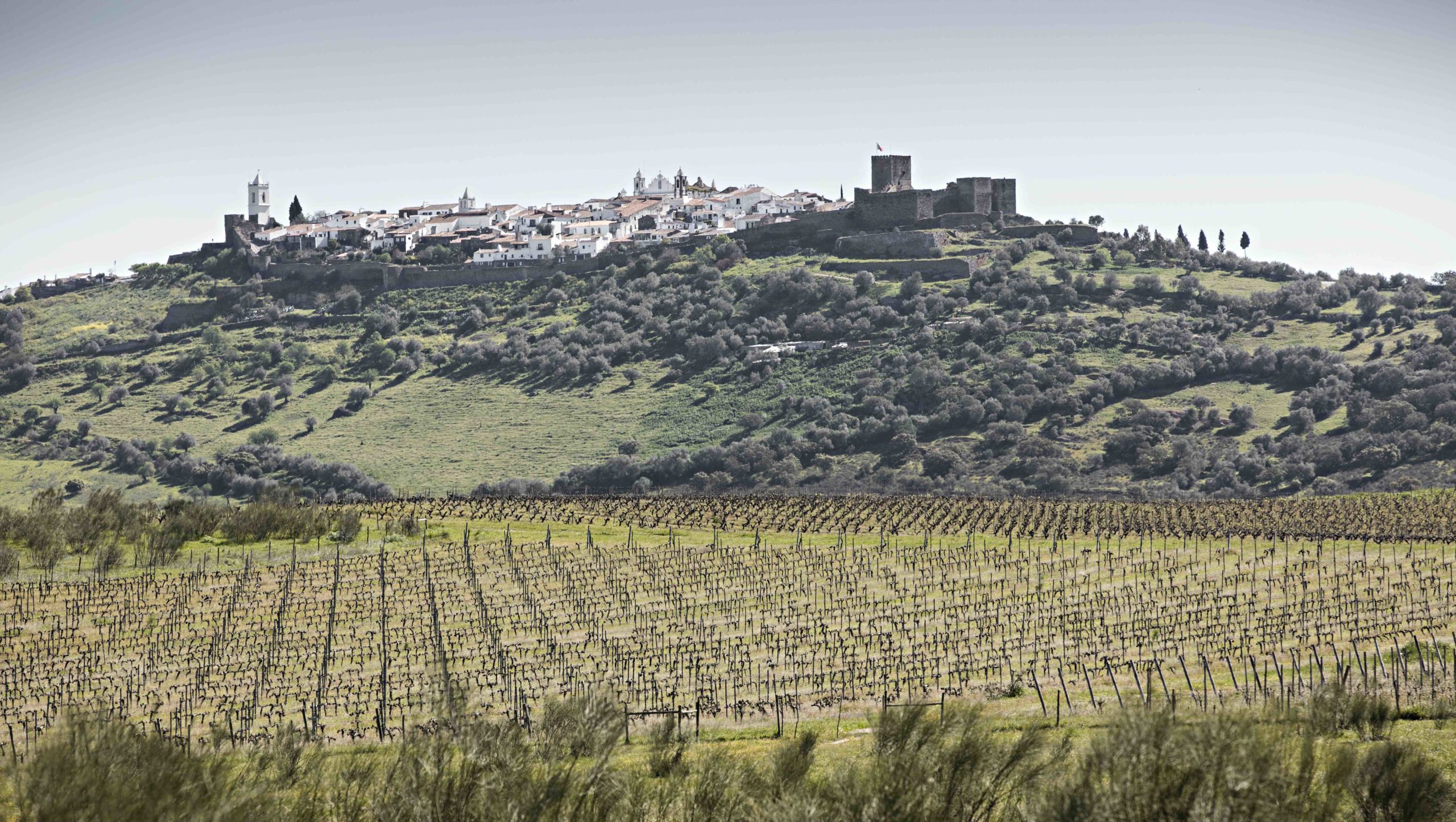
There’s no denying that this year has forced us all to slow down in one way or another, retreating inwards, shrinking our footprints and living more localised lives. 2020 has also seen travel and tourism come to a near-standstill.
Many of us are keen to quash our impact on overtourism by searching for lesser-known, off the beaten track destinations. Upskilling holidays where visitors learn or hone a craft, retreats with a focus on health and wellness, and immersive cultural experiences are becoming increasingly popular and mainstream. There’s a hunger for unique and meaningful experiences over super-luxe resort holidays and this is only set to grow as travellers take a more environmentally and socially conscious approach. One tourism sector which is seeing increased interest is agritourism.
Blending nature, tradition, culture and lifestyle, the concept of agritourism is nothing new; in short, it’s the integration of both tourism and agriculture. People visit rural environments where the working land such as vineyards or ranches have become travel destinations in their own right, offering both accommodation and leisure activities. In comparison to mass tourism, it’s a great alternative for those who yearn for a little respite from their urban existences.
Agritourism is a meaningful and effective way for the hospitality industry to educate and entertain tourists while supporting a wholesome, thriving economy. For visitors, it’s a unique, experiential learning opportunity to understand agriculture. For farmers, it’s a way to supplement income during off-seasons, gain recognition for their agricultural produce and protect their land’s natural resources and amenities. For smaller rural communities, it improves the incomes for those who would otherwise rely solely on subsistence farming. In terms of wider economic development, bringing tourists into the destination who may then shop, eat and socialise locally is also a huge benefit.
Many travel operators collaborate with small communities to curate unique offerings, while even the larger hoteliers are also introducing agricultural experiences within a luxury setting, through chef’s table-style cooking classes and tours of the grounds where their produce is grown. It’s an opportunity to explore local gastronomy and learn about the ecology and customs pertaining to a destination, all while connecting with the food we eat.
São Lourenço do Barrocal – Portugal

Agritourism offerings vary across the world. In Portugal, São Lourenço do Barrocal is a farmstead, hotel, winery and spa which produces its own olive oil and wine. Owner José Antonio Uva has opened up his 15 hectares of vineyards and vast organic garden which provides almost all of the fruit, vegetables and herbs for the kitchens. Guests can delve into agricultural activities, from olive and grape picking harvest to foraging and cooking classes where they’ll learn to create traditional Portuguese dishes.
“It’s always been so important to us that Barrocal not only acts as a hospitality project but a preservation initiative, celebrating local culture, fostering a true sense of community and preserving as much as we could the estate’s original 19th century principles of self-sufficiency” says José. The region is easily accessible from Lisbon, yet relatively undiscovered. José sees São Lourenço do Barrocal’s offering as a way for visitors to “foster a deep and meaningful connection with the land and its people” while valuing the region and preserving its heritage. “This is really the only way to truly get under the skin of the Alentejo and understand what makes the region so special.”

A self-described power duo, Agnese is the “digital guru” with an eye for photography and a discerning taste in food (she was born in Rome, after all), while Paola is the “events maven” who believes in living la dolce vita and knows exactly what modern, sophisticated travellers desire. They’re opposites when it comes to packing, too – Agnese never travels without her camera or Kindle, whereas Paola prioritises ultra comfy sneakers to cycle, walk or explore in and her signature red lipstick.
While it’s not too often that we can thank our former flames for our success stories, the two met through Agnese’s best friend that was Paola’s ex boyfriend and soon began grabbing lunches together since their offices weren’t all that far apart. As it transpired, they shared both backgrounds in fashion and a perpetual love of travel. Frequently tasked with requests for guidance from friends and co-workers with wanderlust, the two decided to start a travel blog together, “everyone was always asking us where we were going and they always wanted tips from us – so it made sense,” explains the duo. Discovering that they were onto a good thing, the pair decided to take the plunge and turn that hobby into a business. Their new bespoke platform, The Maptique, launched in July 2018 and they haven’t looked back since.
Today, The Maptique creates localised B2B and B2C experiences, along with engaging Insider Guides and a curation of Hidden Gems for its growing readership. As talk naturally turns to the pandemic during the interview, Paola and Agnese reveal that they designed virtual experiences for The Maptique Lab, with the hope of keeping their community’s spirits up during the tough time through digital experiences combining online and offline activities like yoga, painting and nail art.
The impacts of the current crisis have also highlighted to many how we can all learn to live – and travel – more mindfully. “We really care about the environment and sustainability issues. To us, sustainability is a way of living,” they say, as I’m poised ready to jot down their tips for travelling more consciously. They point out that “small tricks” can make a big difference: ditch cars and taxi rides for bicycles where you can, keep your tickets digital rather than printing them, travel off-season, pack only what you need, cut down on plastic waste by always carrying a reusable water bottle, eat less meat and more fish, choose organic, natural and plant-based beauty products – most importantly find a sunscreen that’s free from toxic chemicals, so it’s not polluting out beautiful waters or harming marine life and coral reefs.
Finally, I spy my chance to ask for their recommendations of some gorgeous mindful Hidden Gems and eco-resorts to visit in 2021. Here are their five choices, with some quick snippets of research about each destination underneath.
COUCOO CABANES
A taste of luxury in the wild, the Coucoo Grands Chênes eco-domain is a unique retreat located just 45 minutes north of Paris in the woody heart of Raray. Designed with ropes to hike up your (hopefully lightly packed) luggage, the cabins and terraces offer panoramic views of starry skies and treetops, working in harmony with the calm and natural environment surrounding them. The construction of each one respects the trees that welcome them, too. In fact, the health of the trees is monitored by a forest expert so that the huts can be adapted as they grow. Ran by a team conscious of waste, hourglasses are placed in the showers to boost awareness of water consumption. A natural water purification system is used for the treatment of the heated Nordic baths, allowing them to function without the use of harmful chemicals. Local produce is favored for food, just as ecological products are favoured for maintenance and cleaning. Take a book and your walking shoes because you won’t find any Wi-Fi access. Here, it’s time to truly disconnect, log off and unwind – though you’d be forgiven for taking photos of the stunning setting for Instagram.
@coucoucabanes
RANTAN FARMHOUSE

Foodies, this one’s for you. “Things began with a love story,” says the married couple behind Rantan Farmhouse, Francesco Scarrone and Carol Choi – this heartfelt sense of unity and togetherness is beautifully captured through the way everyone sits and eats together at a communal table in the home setting on the duo’s plot of land in the mountains of Valchiusella. They met and learned what they know about collaborating closely with local producers and organic farmers while working at some of the world’s most innovative restaurants in Copenhagen. Biodiversity, environmentally responsible farming practices and sustainable habits in the kitchen are ingrained for these two chefs-turned-farmers. Creating menus that respect the needs and limits of their land, they use the best products from their fields and work with a natural cycle when cooking with fresh produce, preserving the ingredients at the height of harvest to prepare for leaner seasons. If you choose to stay over, there’s hemp sheets, linen towels and organic soaps.
@rantan_farmhouse
SAN LUIS LODGES

The San Luis is a private retreat at an exclusive chalet village in Hafling/Avelengo where you can feel at one with nature – it expresses a simplicity of style through the use of wood, glass and clay. Nestled deep in the forest, you can choose from spending the night in a wooden chalet by the lake or among the branches in treehouses. The considered side of things comes into play with the materials and ingredients – specifically ancient timber treated in accordance with the Mondholz (moon wood) tradition, which observes lunar cycles to maintain its resilience and energy. Special textiles and naturally-treated linens are placed in the lodges, while the kitchen makes use of the orchards, berries and rare spices found nearby.
@sanluislodges
BERBER LODGES

A rural escape in Marrakech, the Berber Lodge retreat is a love letter from the owner, Roman Michel Meniere – a French-Swiss interior designer who’s lived in Morocco since 2002 – and the inhabitants of Oumnass. Inspired by traditional Berber architecture, the lodge was built on an old Olive garden using local resources and by local craftsmen. All of the old olive trees have been preserved, while local trees (like Eucalyptus and Wild Bamboo) are used to create a ceiling. The terracotta tiles were locally custom made and the interior design celebrates the best of local furniture and pottery.
@berberlodge_
MORROMICO

Located on Colombia’s Pacific coast where you’ll find beaches, untouched rainforest and waterfalls that flow from the jungle out to sea, Morromico is a family-owned eco-hotel. With a limit of ten guests at a time to ensure a warm and personal experience, the semi-open rooms are powered by a small hydroelectric plan.
@morromico